 |
BRYANT G BAYLIFFE |
 |
|
| Section 1
Surveyor R.A. 115 Locating Battery, BAOR.
|
|||
|
|
|||
| Section | 1 | Title and contents | |
| ditto | 2 | Bryant G Bayliffe - The Story | |
| ditto | 3 | Map of Larkhill Camp, Wilts. 1953 | |
| ditto | 4 | German Autobahn from a Champ. 1954 | |
| ditto | 5 | Westfalendamm, Dortmund, Germany, 1954 | |
| ditto | 6 | Ubique Barracks, Westfalendamm, Dortmund, Germany. 1954 | |
| ditto | 7 | NAAFI, Ubique Barracks, Westfalendamm, Dortmund, Germany. 1954 | |
| ditto | 8 | Typical deployment for Short Base Sound Ranging | |
| ditto | 9 | Linear Microphone Sound Ranging, Mk 1. | |
| ditto | 10 | Folding Envelope (left) for hot-wire grid | |
| ditto | 11 | Hot-wire Microphone installed in the ground | |
| ditto | 12 | Short Base Sound Ranging Recorder No.2 Mk.1 | |
| ditto | 13 | Output Trace from S.R. Recorder No.2 | |
| ditto | 14 | "Somewhere in Germany" 1954 | |
| ditto | 15 | Bad Oeynhausen, Germany, Sept. 1954 "Battle Royal" | |
| ditto | 16 | Bad Oeynhausen, Germany, Sept. 1954 Camouflaged Champ | |
| ditto | 17 | Hohne Practise Camp, Germany, 1954. Two Intrepid Bombardiers! | |
| ditto | 18 | Hohne Practise Camp, Germany, 1954. Maintenance | |
| ditto | 19 | Hohne Practise Camp, Germany, 1954. Office Truck & Champ etc. | |
| ditto | 20 | Hohne Practise Camp, Germany, 1954. The Asymptote Plotting Table | |
| ditto | 21 | Munsterlager, Germany, 1954. Gunner's Photo | |
| ditto | 22 | Munsterlager, Germany, 1954. "A" Troop 115 Locating Battery, RA. | |
| ditto | 23 | Fully manned inside the H.Q. Office Truck | |
| ditto | 24 | "The Grosser Preis von Europa" Nürburgring, Germany, 1 August 1954 | |
| ditto | 25 | The German Grand Prix, Nürburgring, 1954. The W196 Mercedes GP cars | |
| ditto | 26 | Winterberg, Germany 1954. The No.6 Leave Centre | |
| ditto | 27 | Winterberg, Germany 1954. Home comforts in a blizzard | |
| ditto | 28 | Winterberg, Germany 1954. The Author trying to look the part | |
| ditto | 29 | Winterberg, Germany 1954. Skis from the 1940 Norwegian Campaign | |
| ditto | 30 | Iserlohn, Germany, 1954. Church House Training Centre. | |
| ditto | 31 | Royal Artillery Insignia | |
| ditto | 32 | 2nd Infantry Division Insignia | |
| ditto | 33 | Map of The Nürburgring Grand Prix Circuit in 1954 | |
| ditto | 34 | Notes and Sources | |
| Section 2 | |||
| Section 2 |
by Bryant G Bayliffe of Gloucester
****** I was in plenty of time to catch the Birmingham (Snow Hill) train starting from Gloucester (Central) on the morning of Thursday the 28th May 1953. I crossed the footbridge to Platform 4 and settled into my seat with some apprehension about my life for the next two years. After just over three years deferment for my Civil Engineering studies I was now obliged to enlist for 2 years National Service in the Royal Artillery. The train eased out of the station on time crossing Horton Road and Barnwood Bridge before the rapid journey to Birmingham. At Snow Hill Station my train for Oswestry and Gobowen arrived and I now realised that many of my fellow travellers were young men joining the army. Some weeks earlier I had attended a medical examination at the Medical Board, Army Recruiting Centre, Northgate Mansions (now Spread Eagle Court), Gloucester. Despite a shadow on my lung from a bout of pleurisy in 1945 I was passed A1. A mixed blessing you might say. Incredibly the intake of about 6,000 men for National Service across the country took place every fortnight on a Thursday. The train, mostly full of young men carrying small brown suitcases and wearing belted gabardine raincoats, stopped at Gobowen. We were met on the platform by NCOs who directed us to waiting trucks in the station yard where we all "embussed" and after a short journey to the camp we "debussed". Ugh! With many other young men I was about to join the 68th Regt. Royal Artillery at Park Hall Camp, Oswestry, Shropshire. I recall that on the following Tuesday the 2nd June 1953 we celebrated the Coronation of Queen Elizabeth II. The entire camp was paraded and gave three cheers before assembling in the gymnasium to watch the ceremony on a large projection television set. These were early days for TVs and at that time it was not possible to manufacture cathode ray tubes larger than 12 inches. We spent the rest of the day queuing for everything. One long queue for a mug of tea and a slice of fruit cake on arrival followed by a queue for expenses for those who had come by train - 3 pence for a cup of tea en route. It was quite late before I had placed all my kit on a bed. It was all very daunting including a uniform, beret, badges, denims, underwear, boots, tea mug, eating irons and shoe brushes. I now had my Army number: Gunner 22878535. You never forget it for the rest of your life. I still have two shoe brushes which I stamped with my full number and both are still in use. Trust the Army to have good quality where it mattered. I could go on but it is not my intention to relate the minutiae of basic training and square-bashing, routine humiliation and abuse. Any bonding of the troop during the next few days came mainly from shared pain and hatred of NCOs. The weekly pay parade was memorable. After the elaborate procedure of standing and saluting the officer I was handed a pound note instead of the 25 shillings I expected. No matter I was told, I would receive 30 shillings the next week - this avoided the complicated arithmetic and the need to have cash on the table. Many others have told of their experiences in those first few weeks to great effect so I can now move on. At my interview on the 1st June I was able to say that I thought Surveyor RA would be an appropriate trade for my two years National Service. I mentioned that I had been a junior surveyor to Edward (Ted) Dowling a Surveyor and Highway Engineer at The County Surveyor's Department, Shire Hall, Gloucester, who had been a regular soldier as a young man from early 1920s in the Royal Artillery. His first years were spent in Ireland during the uprising and later he became a Surveyor RA on the permanent staff at the School of Artillery, Larkhill, Wiltshire. Ted was involved with the creation of various proformas so that dedicated artillery survey calculations could be successfully completed under stressful conditions. I recall they included Change of Grid and Azimuth etc. He had joined the Highways Dept. after his 21 years service bringing his considerable talent for draughtsmanship and mathematics to the office. He developed charts etc. for the design of his universal transition curves for highway alignment incorporating appropriate super-elevation with radius, speed and comfort factors. He died in 1959 aged 58 with burial at Quedgeley Parish Church just south of Gloucester. On the 10th June 1953 I was posted to 192 Survey Training Battery, Larkhill, Wilts for training as an RA Surveyor. The journey was by troop-train from Gobowen via the Wolverhampton main line to Tyseley, then by GWR main line to Banbury, Oxford, Reading, Basingstoke, Andover and Ludgershall, Wilts. which is close by Tidworth Camp. The final 12 miles was by truck to be billeted in Horne Barracks, Larkhill, adjacent to the firing range on the Western perimeter of the School of Artillery. The Battery had been formed in 1948 for training all surveyors whether National Service or Regular. Conditions were good but typical army of course, with a mixture of square-bashing and lectures. Regular guard duties and fire pickets where we were armed with pick helves - as trainee soldiers they dare not let us have rifles with live ammunition! The NAAFI arranged Wilts & Dorset buses for weekend leave so I was able to travel direct to Lansdown Railway Station forecourt, Cheltenham some 5 miles from my home. The fact that our training was during the summer months was a blessing - Salisbury Plain can be very unfriendly in the winter. Sessions with theodolites were interesting as we became familiar with the local terrain. The coordinates of the Bustard wind pump near Rollestone Camp were known to the instructors and featured in much of our work. Since most of this field work was done south of the camp (away from the firing range) we had Stonehenge in full view just over a mile to the south. Final agreement was reached on the 27th July 1953 at the Korean War (1951-1953) peace talks at Panmunjom to establish a 4 kilometre wide demilitarised zone on the 38th parallel. There was considerable relief all round since the instructors remembered earlier trainees who had been posted to Korea and who sadly did not return. In August I was exempt from the General Certificate of Education and on the 2nd October passed as an RA. Surveyor Group A. Class III. Organized by the NAAFI I was able to go by coach from Larkhill to the 1953 Farnborough Airshow in early September. These were the days of the V Bombers and prototype supersonic fighters, so the displays were very impressive and of course the sound barrier was broken many times with resultant bangs at ground level. My main interest however was to see the only airworthy prototype of the Gloster Javelin, a delta-winged fighter which was built only a few hundred yards from my home near Gloucester. Following the break-up and crash of de Havilland's DH.110 at the Show in the previous year with many dead and wounded spectators, Bill Waterton, Gloster's Chief Test Pilot was limited in his low level display. The Javelin was difficult to fly and disappointed many people. The high level pass was subsonic and we were left with a very low speed pass at a few hundred feet demonstrating the low stall speed. Not very inspiring I am afraid. Glosters had to produce many variants and modifications before volume production of a half decent aircraft could start. The Company built 436 of the type which was designated an All-weather Fighter/interceptor. It proved to be the last aircraft produced by Glosters. With completion of training I moved to Woolwich Barracks (Depot) for Departure Drafts on the 9th October. The barracks which were to be my temporary home had been mainly built by Napoleonic Prisoners of War in the early 1800s. The ground floors were originally for horses with accommodation on the first floor and a balcony with iron railings overlooking the parade ground. The conditions were appalling with 3 tier bunk beds crammed together and very few toilets which were a disgrace. The food was pretty good though. There was some relief at the weekend with visits to Arsenal & Charlton Athletic Football games and to the Nuffield Centre near Trafalgar Square in the centre of London. Set up during WW2 it was still open for servicemen to relax and gather information. A group of us were given free tickets for a matinee performance of a play at The Scala Theatre, 58 Charlotte Street (demolished in 1969) travelling by Underground to Goodge Street Station. Thankfully I have forgotten the name of the play but the opening scene was set in a country house where an actor comes bounding into the drawing room via the French windows complete with striped jacket and racquet shouting "anyone for tennis?". My worst fears were confirmed. After 2 weeks embarkation leave I returned to Woolwich Barracks late on the Sunday night for the 8am parade on Monday. I drew my bedding and found a bunk to get my head down. About 4.30am I was rudely awakened as the PA screeched with trumpets calling reveille. I staggered to the balcony to find the parade ground packed with hundreds of troops lined up complete with standard issue haversack rations in brown paper bags. Very senior officers were detailing squads to army trucks to be transported to petrol depots in the Greater London area. The troops had been called in to operate petrol tankers and replace striking drivers. During the emergency 6,000 troops were involved and many were billeted at Woolwich. The quality of the canteen food deteriorated as a result. On the 6th November 1953 travelling by rail and sea (Harwich to Hook of Holland) I had been posted to 115 Locating Battery (short base sound ranging) B.A.O.R. (British Army of the Rhine), Westfalendamm, Dortmund, Germany. Platform 12 at Liverpool Street Station was the departure point for the military trains and from there to our destination all arrangements were controlled by a Railway Traffic Officer from the British Forces Movement Control. Three trains left the Station in the evening at about half hour intervals. Arriving at Parkeston Quay, Harwich where a small complex of Nissen Huts dealt with many hundreds of service men and women, married families and military mail. Fed and watered we boarded the troopship for the overnight crossing to the Hook of Holland where similar documentation and facilities were provided. They also issued coloured dockets indicating which of the colour-coded waiting trains to join for destinations right across Europe. My train passed through Arnhem before leaving Holland and proceeded to Dortmund in the Ruhr valley. On the platform we were met with the usual efficiency by the Railway Traffic Office and directed to a Volkswagen Minibus which took us to our barracks in Dortmund. The British had hundreds of years of experience in sending expeditionary armies overseas, so I suppose it is not surprising that they seemed to know what they were doing. Full marks indeed! By the early 1960s air trooping had arrived for these movements and many of these facilities were closed down. "A" Troop was billeted in Block 4, Ubique Barracks (named after the RA insignia motto). This had been a Wehrmacht Army Barracks during WWII. With high quality buildings, triple glazing, trip solenoid fuse-boxes (with the lethal array of tatty electrical gadgets used by the gunners absolutely essential) and granite setts to the roadways Hitler certainly knew how to look after his soldiers. At the first parade the following morning the Sergeant asked anyone with a civilian driving licence to step forward 2 paces. Within the hour four of us had driven a left hand drive Jeep for ten minutes for the first time on the wrong side of the road up and down the dual carriageway outside the camp. An Army Driving Licence was issued before midday. Some of our transport still showed the Normandy Star under fresh coats of green paint. The vehicles included Jeeps, light Chevrolet trucks, Fordson Office trucks, 10 ton AEC Matador trucks and Bren Gun Carriers (for the Advanced Posts). I was soon allotted the Office Truck with a 4 litre V8 petrol engine. The space in the cab was so configured that the driver was sitting by the side of the engine with the manual gearbox some distance behind. The gear-stick was so long that selecting a gear was a lottery rather than a precise art. In 1954 the Jeeps and light trucks were replaced by Austin Champs (with Rolls Royce designed engines) and Humber vehicles from a depot in Wuppertal (famous for its suspended monorail built circa 1900). Later we acted as driving instructors on a disused airfield not far from the camp. It was not long before many of these modern vehicles had to be returned to the depot for repairs and modifications. We drove them from Dortmund and passed through Essen, still showing the effects of allied bombing and dodging the unfamiliar trams to hand over the Champs to the RAOC engineers at Wuppertal. Amazingly they then drove them back up the access road to their workshops in reverse at 50 mph, having 5 speeds in forward and reverse gears. I recall the MT Sergeant describing the snorkel engine breathing pipe on the Champ for driving in deep water. In a Scottish dialect difficult to convey even phonetically in the printed word a fellow gunner remarked "But Sarge - when the wayter goes over yeer heeed yeer f---d". Much ribald laughter followed. We shared the billet with a Royal Artillery Mortar Battery equipped with heavy mortars (4.2 inch). The smaller mortars (2 inch etc.) were used by the infantry. As I recall 18 Field Ambulance was also in the block. Our Battery was attached to the 45th Field Regiment RA, just down the road in West Riding Barracks and we were all in the 2nd Infantry Division. The Division insignia cross keys on a black background was used as our shoulder flash and displayed on the vehicles. During the last few weeks of 1953 we started training in the mysteries of mortar location by sound ranging. A short dissertation on the technique would not come amiss I think. Placing hot-wire microphones at regular surveyed locations (approximately 700yards apart) to detect the sound of gun fire & mortars. By measuring the time difference between of the sound as it reaches each microphone you could calculate the position from which the sound pulse originated. The short base was as near the forward defence line as possible, mortars did not make much sound - pop rather than bang! The AP was usually with the forward infantry and 700 yards in front of the line of microphones. Using the same wire as the microphones the AP triggered the recorder at HQ to start when he heard the distinctive sound of the target mortar. The AP, microphones and HQ were connected by a single wire laid from drums on the back of Champs etc. using earth return or twisted pair if available. Each microphone had transmitter units connected to the same wire using a dedicated carrier frequency. Low Pass Filters at HQ were able to separate the signals passing down the single wire from the microphones and AP and after more amplification fed to the four pen recorder. As mentioned the recorder was started by the remote switching from the APs so that the film reader had a better chance of finding the particular mortar on the trace. The time difference between each pulse was read from the 3 inch wide Teledetos paper issuing from the recorder and with appropriate corrections for humidity etc. was passed to the operator of the Asymptote Plotting Table. Three fine strings were aligned to the scale on the edge of the board which intersected with a 'cat's cradle' and the target coordinates could be read off. I would mention here that we used the asymptote method which deduced the bearing from the mid-point of each sub-base (2 microphones) and plotted them. For the record, a tangent is to a circle as an asymptote is to a hyperbola. Wake up at the back there! The coordinates etc. would be passed by radio (19 Sets were used by the RA and the Royal Corps of Signals detachment) and much depended on whether we were on a Local, Regimental, Divisional or Theatre Grid. If the Plotting table had been set up on a local grid a Change of Grid calculation was required. We were also able to use the system for locating howitzers (high angle guns), air burst ranging, gun calibration and fall of shot corrections etc. On one occasion we were deployed at dusk for a fall of shot correction exercise at dawn. Nobody told us that a battery of 25 pounders had arrived in the dark only a few yards from the HQ office truck. We were between the guns and target with the low angle shell trajectory directly overhead. They started firing at dawn and it was a while before we recovered from the shock. Somebody should have told us - we were after all on the same side! There were up to 7 people in the HQ Office out of a troop of about 25. The remainder were AP operators, line layers and those that installed, surveyed and maintained the lead acid batteries and paraphernalia of the microphones. If locating radars were used as back up I personally did not see them. Ideally in a war situation there would be 3 Short Bases in a line and supporting Radar Locators between the forward defence line and Long Bases which were much further back. For me the problem with the Royal Artillery was that one minute you were supposed to be a boffin and the next a foot soldier. I could never reconcile these two positions and on one bitterly cold morning parade in my first winter and wearing denims for a camouflage scheme I must have looked my disgust and finished up running round the MT yard with my rifle over my head. Only when I was completely shattered did the Sergeant call me back to the ranks. Moral - always smile at the Sergeant! The Battery trained many times on ranges of which there were plenty across the north German plain. Among them was Munsterlager the home of the 94th Locating Battery where on 26th Mar 1954 I passed exams as an RA Surveyor (SR) Group A. Class II. The following month I was appointed Acting Lance Bombardier. Designated a "home posting" we were allowed 2 weeks leave every six months and using the excellent army transport system I spent my leave at home in Gloucestershire. Upon my return I found that on the 26th May that I had been promoted Acting Bombardier. On one leave I arrived at Paddington Station to take the Cheltenham via Swindon train only to find that there were delays and I was recommended to take the Worcester train and change at Kingham for Cheltenham. I knew nothing about the station or the route to be taken. I was impressed to find a two carriage stopping train waiting for the Worcester train and in minutes we were on our way. I list the places en route which interested me: Stow on the Wold (Maugersbury), Bourton-on-the-Water, Notgrove and Andoversford where we joined the line from Cirencester. We continued through Andoversford Tunnel (Sandywell Park) and immediately on to the Dowdeswell Viaduct with grand views of the reservoir. I was now in familiar territory as we passed through Charlton Kings, Leckhampton and under the Shurdington Road to begin the right-handed loop to enter Cheltenham Spa (Malvern Road and St James). For the record in 1962 some 8 years later, passenger traffic was withdrawn from this line with freight in 1964. The viaduct was demolished in 1967. I appeal to everyone out there please give generously if you are ever offered a collection tin for the Church Army. We were on a particularly gruelling exercise when out of the sunset a dishevelled and depressed troop of gunners saw a Church Army van coming through the pine forest on a dusty sand track towards us in the middle of nowhere. It pulled up by our group and a side shutter lowered. A woman who would definitely not be described as a Marilyn Monroe look-alike started serving cha and wads. In the eyes of every gunner there she was an angel of mercy. Among my other duties I was now placed in charge of the Technical Stores in the basement of Block 4. The Quartermaster was a decent man nearing his discharge from the Army and he helped many times when material was lost or damaged on the many exercises the troop carried out. He received his long service medal during my stay at a parade where he wore black polished boots for the first time in years instead of his usual light brown suede shoes (he was probably excused boots). I recall we were issued an expensive chronometer to facilitate more accurate sun observations. Adjustment would be made after removal of the front metal ring and glass. The officer could not shift it and the Quartermaster declined the offer so muggins had a go. The face suddenly came off and took the hands etc. with it. This brand new chronometer now useless was repackaged and returned to depot for repairs with a "Misuse and Damage Report". I was fortunate not to be charged - there is a moral to that story somewhere. It is worth mentioning that there was no satellite navigation in those days, in fact the first Russian Sputnik was not put into space until three years later on the 4th October 1957. With transport arranged by the NAAFI I attended the German Grand Prix (that year also called the "Grosser Pries von Europa) on the 1st August 1954 at the Nürburgring about 150 miles southwest of Dortmund. Since the end of WWII I had been a keen follower of the sport and had been to races at Silverstone and Castle Combe. The circuit was 14 miles long so the cars only came round every 10 minutes or so. The PA commentary in German was essential and of course Juan Manuel Fangio won the race in a W196 Mercedes. This was the third race since the return of Mercedes to motor racing after the 2nd World War and the first appearance of the open wheel version of the "Silver Arrows". Mike Hawthorn finished second in a Ferrari having taken over the car from Gonzalez who had retired himself feeling unwell. Our viewpoint was the Karussel hairpin where you could watch the cars on the concrete banking on the inside of the bend and look straight down into the cockpit. A brilliant experience. The journey to the circuit passed through Bonn (then the capital of West Germany) virtually unscathed by the war. However on the return journey we stopped at Cologne for refreshments some 40 miles north of the circuit. Blown to pieces in the war of course but the blackened Cathedral still stood among the ruins. By 1954 BAOR was part of the NATO Northern Army Group (NORTHAG). In September our Battery was deployed with 80,000 troops in a major exercise across the north German plain called "Battle Royal". The accent was on communication, logistics and control of the moving battlefield so that our sound ranging talents were not required. Although a small unit by most army standards we had a large number of medium to light vehicles. A week in to the fortnight's exercise we were brought up just behind the forward positions to lay down a smoke screen to cover a river crossing by infantry and armour. At timed intervals from our allocated grid positions we activated the canisters. Consisting of a white powder the very intrusive smoke was effective and I will never forget the sight of an irate German farmer and his family approaching us in the field whilst the smoke gently drifted through his farmhouse. The officer was very diplomatic and no doubt agreed some modest compensation. Whenever the Army was on manoeuvres outside the normal firing and practise ranges damage to property was a major problem, but compensation was always paid. My other recollection is that the exercise was called off a few days early due to casualties sustained by a Guards Battalion when tanks moved through their positions. There was a battalion of The Black Watch stationed nearby at Dortmund and the wail of bagpipes at some ungodly hour of the morning or evening had a mixed reception. Later in my time at Dortmund I had to march sick parades to their camp since our unit did not have a Medical Officer. On one occasion I was marching my motley crew (they were sick after all!) through the Black Watch gates when the Guard Commander shouted "Corporal - halt those men". I ignored him of course but on repetition I brought my ragged column to a halt. The fuming Sergeant approached me and before he could have his say I reminded him that I was a Bombardier not a Corporal. Suitably chastened he requested I smarten my men up going through his camp to see the MO and we proceeded complete with a feeling of relief and broad grins. In October I was able to take two weeks leave in England and another bitterly cold German winter was about to start. My thoughts were always with the soldiers who fought each other in these freezing conditions during WWII. I recall in the previous winter the sentries (including myself) who went out in pairs (2 hours on and 2 hours off) were very affected by the conditions despite huge kapok coats. Occasionally they had to be helped back to the Guard Room because they were in such a state. In the New Year on the 24th January 1955 I was promoted Substantive Bombardier. I was now performing the night duties of Guard Commander at the main gate of Ubique Barracks. The British Army employed displaced persons (mostly east Europeans) as General Service Orderlies (GSO) and Male Service Orderlies (MSO) to patrol the camp perimeter. They held Alsatian dogs in secure kennels within the camp but were on a lead and no muzzle on their tour. One night I had an encounter with one of these Alsatians which put me off (all) dogs for the rest of my life. Nearing the end of my 2 years service I was now getting "boat happy" as the army saying goes, and a new Bombardier was running the HQ Office truck in exercises so on one occasion I was put in charge of transporting and distributing rations. I had a Bedford truck on the practise range and two of my lads were unloading hay-boxes with fresh warm meals inside when the CO arrived in his Champ. He shouted "Bombardier - charge that man ". When I asked "what for? Sir!" he said the gunner was smoking while handling food. I could not believe it but had no option but obey orders and to charge him. Back at the Barracks I told the Sergeant Major in charge of the Court that I was not happy about the charge and reminded him that all food was still secure in the boxes and my Sergeant was sat in the cab of my truck reading the boys comic "The Beano" at the time. He took my drift as they say and his whispered comment in the CO's ear led to a caution before the charge was read out. Army!! On the 19th May 1955 I returned to Woolwich Depot for National Service Release as Substantive (Full) Bombardier, Surveyor Class II (SR) and went through the demobilisation procedures. The trouble with camps like Woolwich was that the permanent staff were involved with administration and there were few available for guard duties etc. In these last few days I was caught out twice. Firstly when an officer ordered me to escort a "prisoner" to the Charge Room. Not knowing the layout of the buildings I was relieved to be dismissed when I had delivered the gunner to the Sergeant Major concerned. On the second occasion I was trapped by a sergeant who ordered me to be Guard Commander from 6pm on my last Saturday to 6am on the Sunday morning. When I had my guard assembled the officer of the day turned up to inspect the guard and I noticed he was wearing brown suede shoes so I knew he would not be too difficult. With vague instructions he told me to march the guard to Woolwich Common guard room. Out through the famous main arch to the main Square a splendid sight indeed (the buildings not the guard!), right turn on the public road and in sight was a guard room. We were not visited by an officer during the 12 hour stint and at 6am I marched the guard back to our parade ground and dismissed them. On completion I was demobbed and went through the gates on the 28th May heading for Gloucester. By Law I could claim my old job back in Civvy Street and I duly returned to my career at the County Surveyor's Office, Gloucester. I was immediately presented with a bill for two years unpaid contribution to the Superannuation Fund. After two years of very low pay in the Army I was unable to find that sort of money so I lost entitlement to two years of pension. Later that year I was able to attend the last International Motor Race Meeting for Formula One & Formula Libre held at Castle Combe (previously mentioned) on the 1st October 1955. Following the serious crash at the Le Mans 24-hour Endurance Race in June, the Club was unable in the following years to upgrade the rather rudimentary facilities to meet the new regulations. The Formula Libre race was held over 20 laps and included the last appearance of the V16 BRM as a works entry. The noise from the supercharged 1.5 litre 16 cylinder engine was unique and could be heard across the entire circuit. The car driven by Ron Flockhart came in 2nd behind Harry Schell in the Vanwall. I was now being posted to HQ. RA. Army Emergency Reserve as a gunner taking my Army kit with me of course. Under the AER I was called to Barracks in the summer of 1956 and spent 2 weeks at my old haunts at the School of Artillery, Larkhill. There was a small group of us who had been Bombardiers, Surveyors RA (SR) and we were now lectured on the art of calibrating guns by Radar. We had no interest in the subject and the officers soon realised they were wasting their time. After the two weeks I drove back home never to return. Soon after that two weeks AER was abandoned leaving only the Territorial Army as active reserve units. I soon received a warrant by post to pay for the return of my army kit by rail from the Goods Depot in Great Western Road, Gloucester. On 27th November 1958 I was discharged on completion of engagement to General Army Reserve, Group N eligible for recall up to the age of 45 (Army Navy & Air Force Reserves Act 1954) and on 28th February 1964 I was discharged from Reserve Liability (Reserve Act 1964).
|
||
| Section 3 | |||
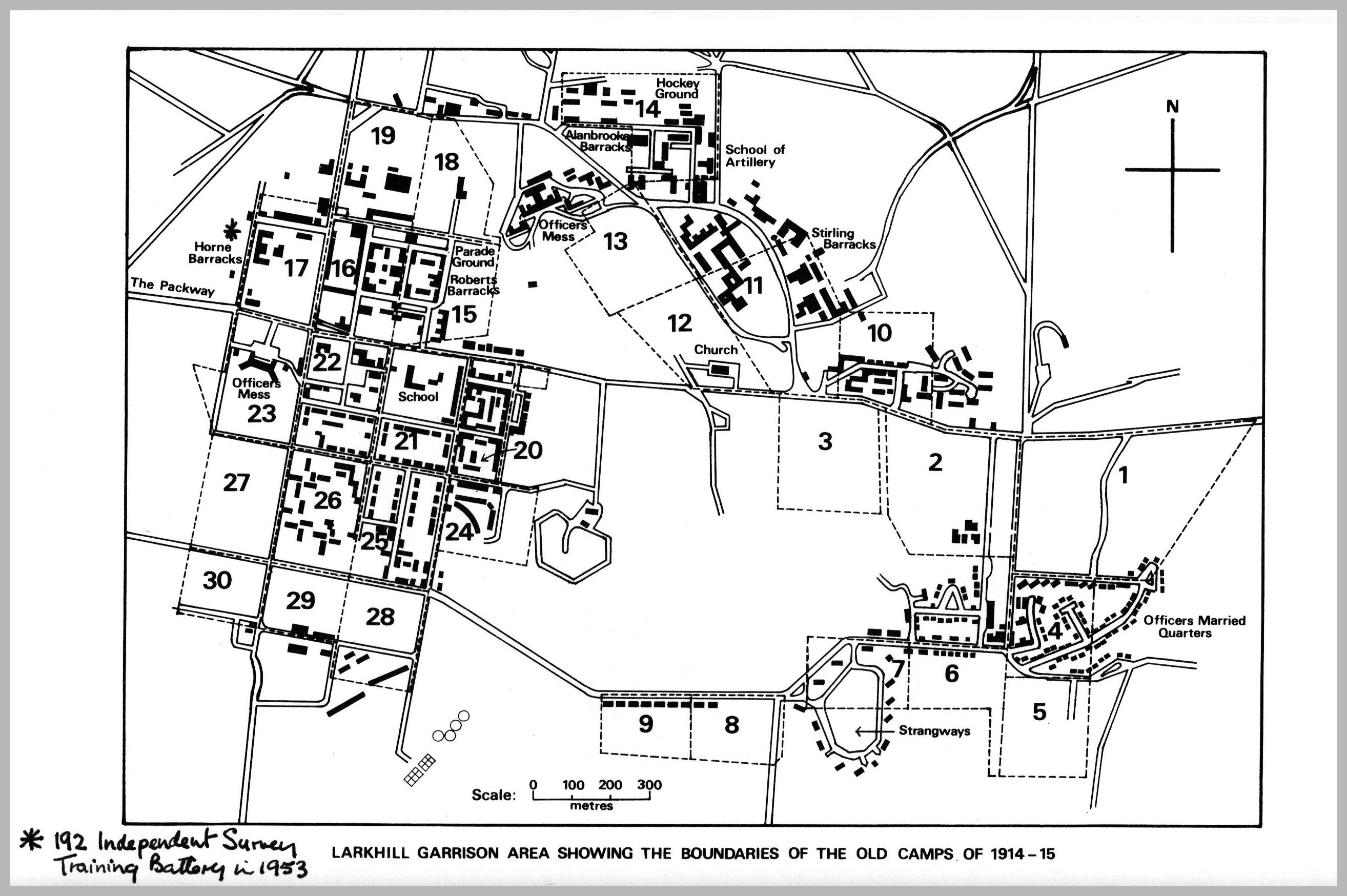
( * Horne Barracks No.17 top left) |
|||
| Section 4 | |||
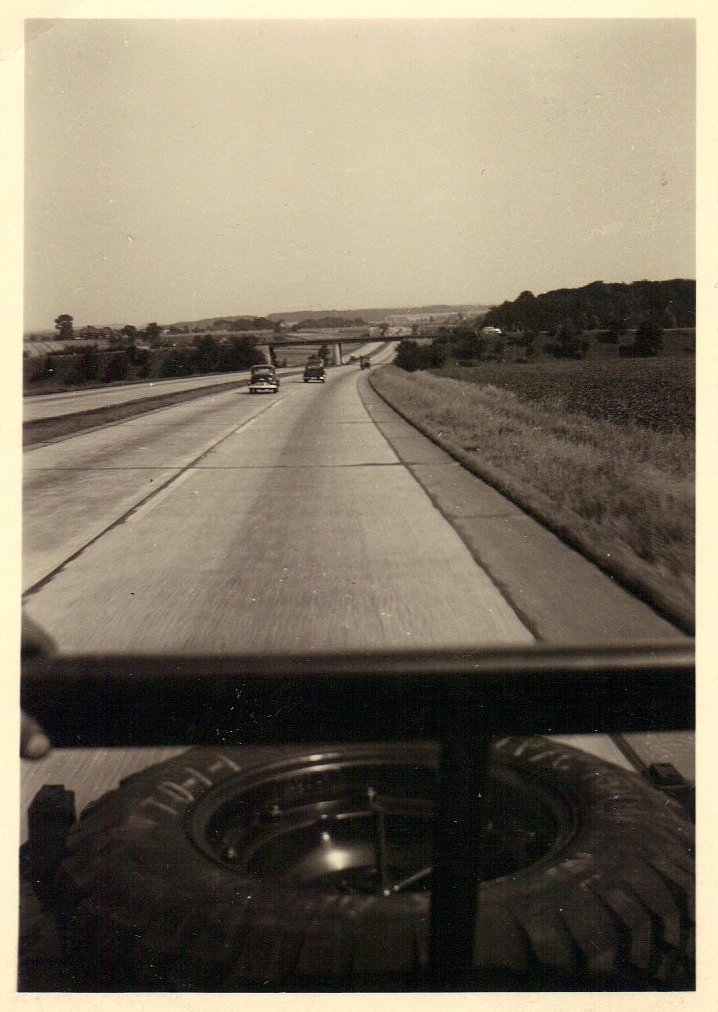
|
|||
| Section 5 | |||
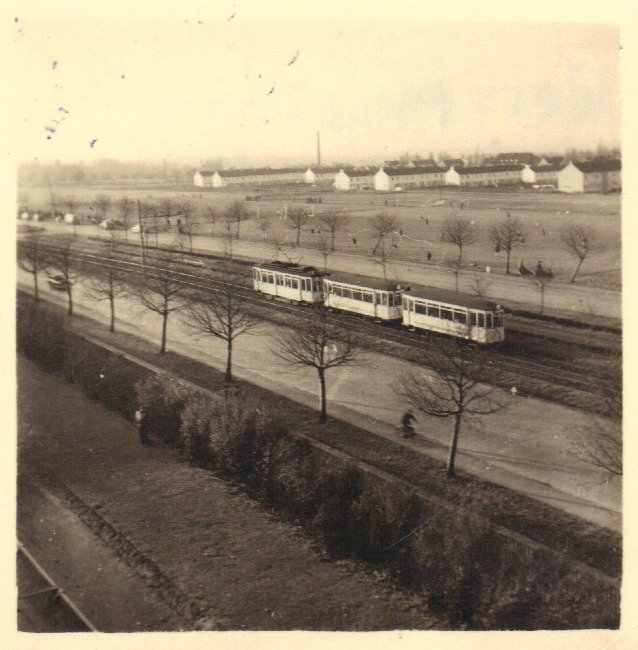
( From Block 4 Ubique Barracks, Dortmund) |
|||
| Section 6 | |||
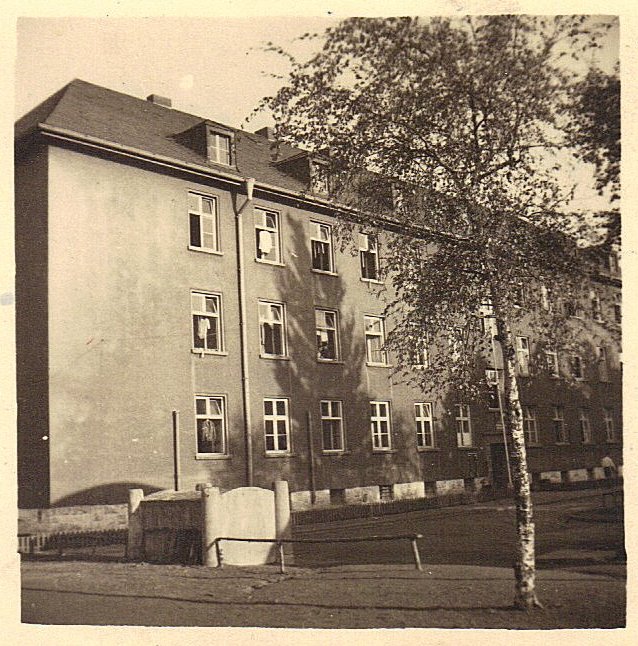
|
|||
| Section 7 | |||
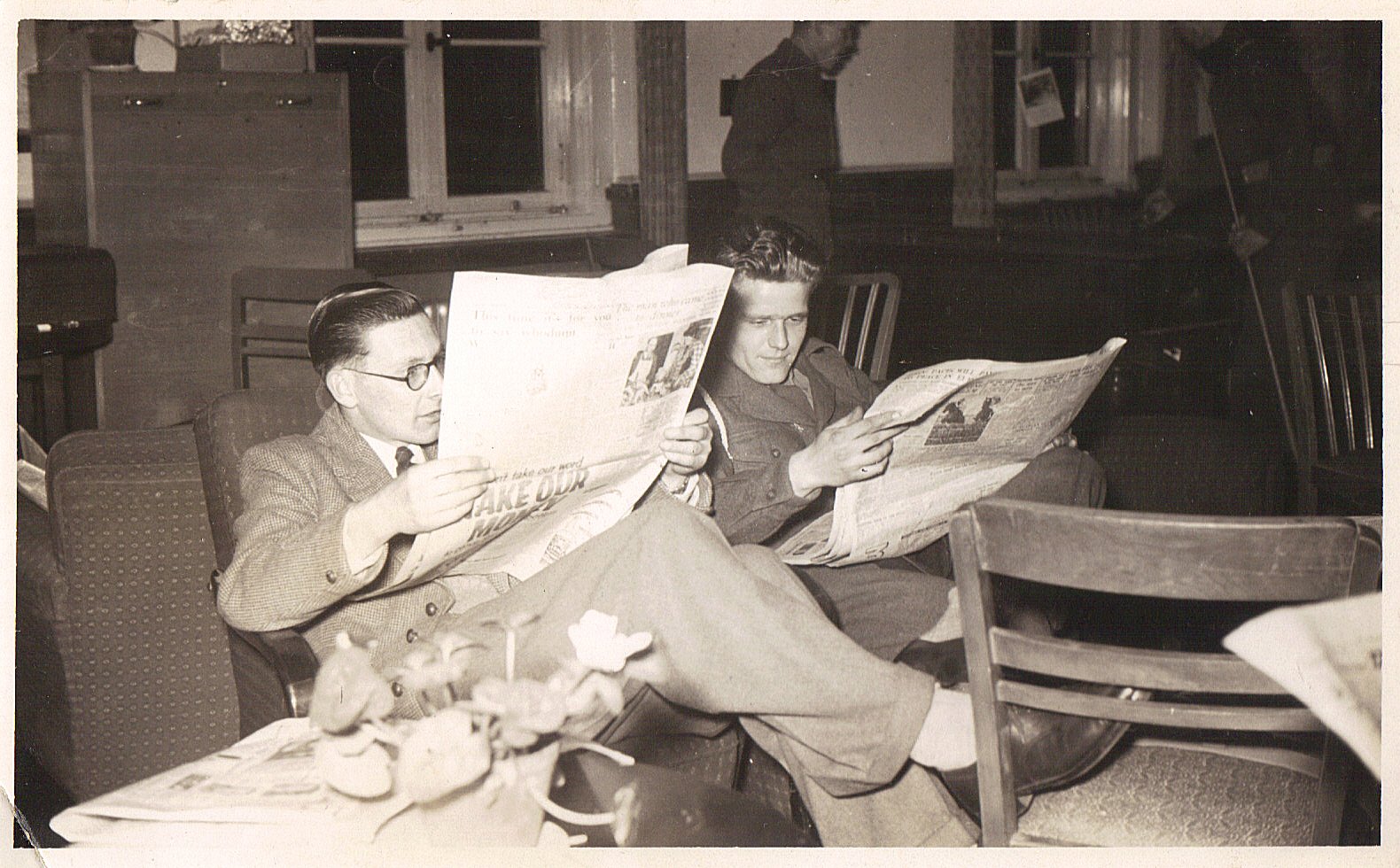
(Relaxing with The Daily Telegraph) |
|||
| Section 8 | |||
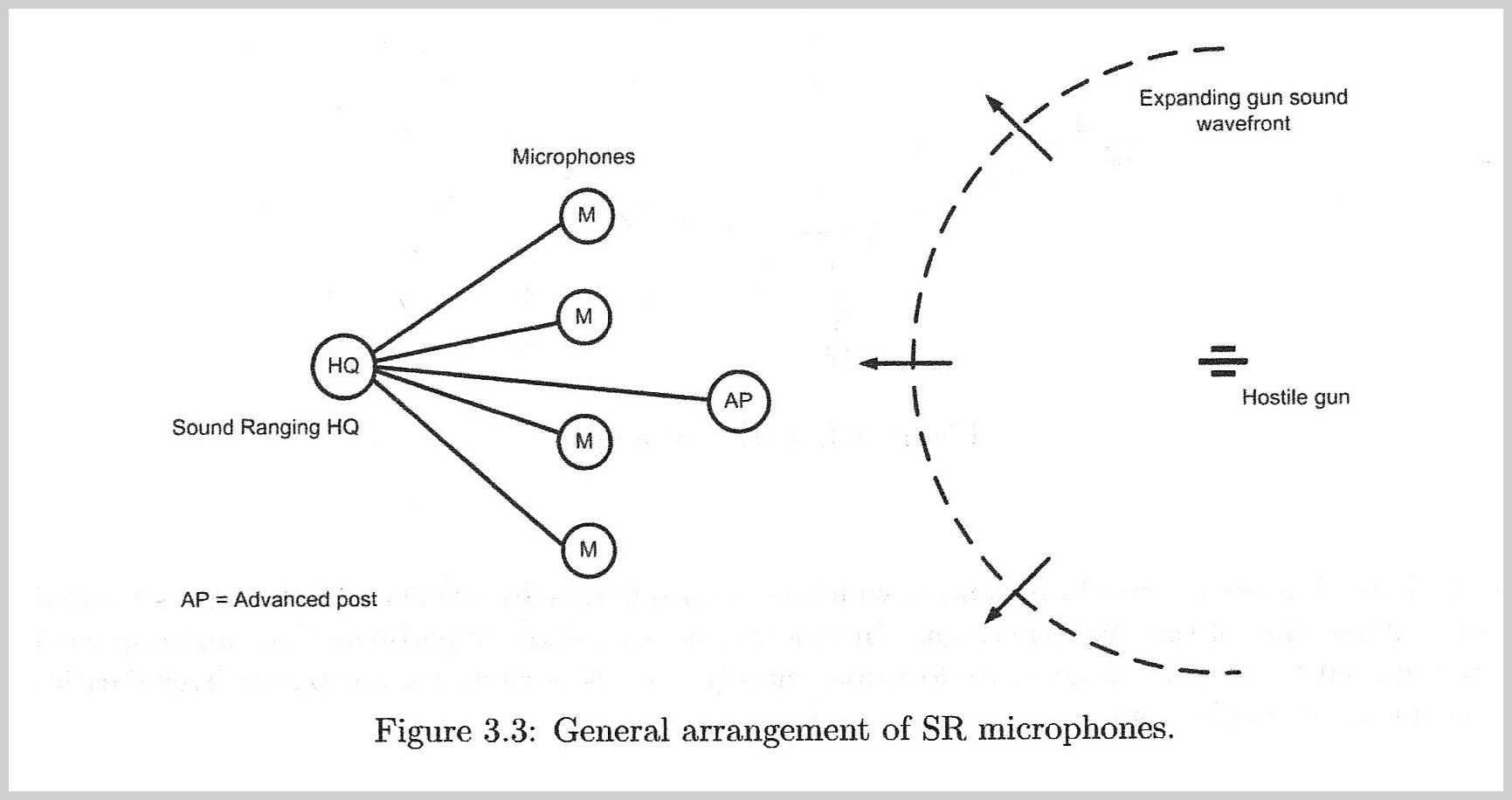
|
|||
| Section 9 | |||
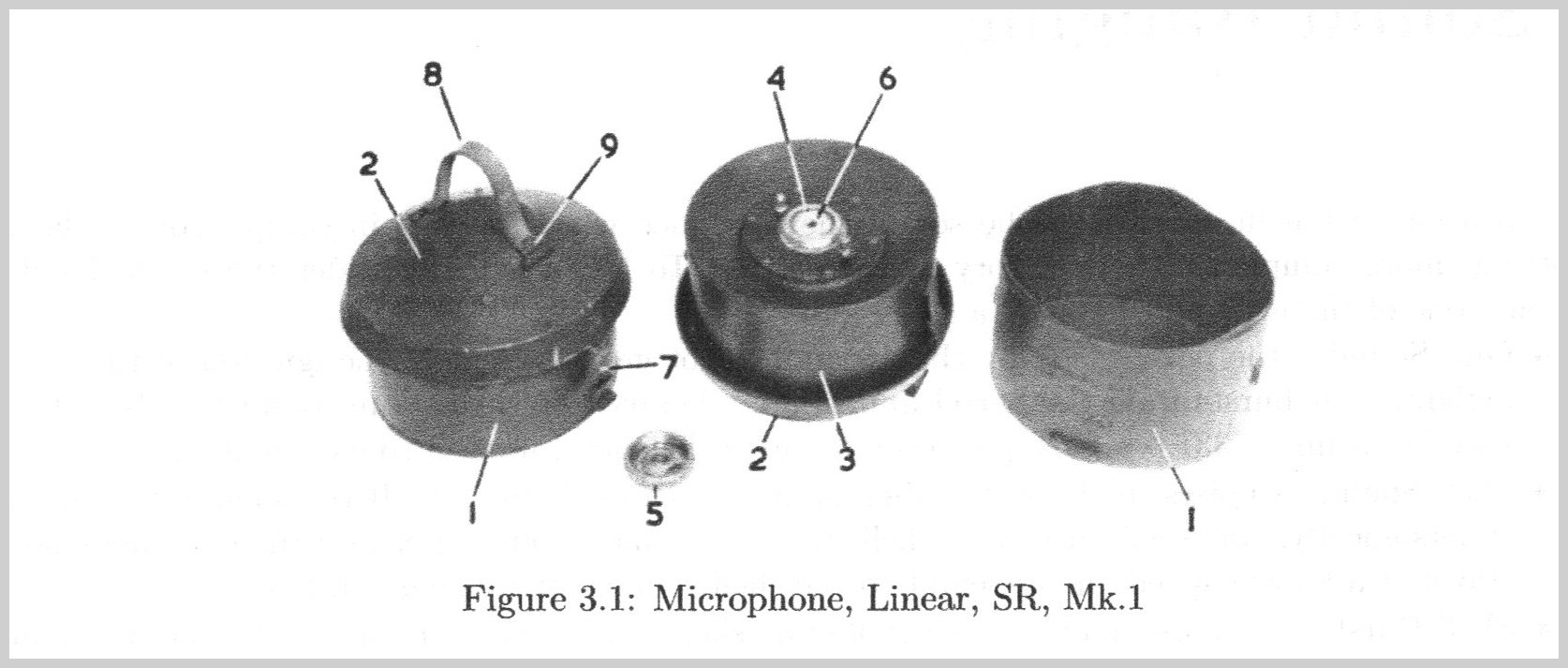
1. Container; 2. Container Cover (inverted); 3. Resonator; 4. Hot-Wire Grid Holder; 5. Grid Cap; 6. Tray for Grid; 7. Sliding Catches; 8. Leather Carrying Handle; 9. Handle Brackets |
|||
| Section 10 | |||
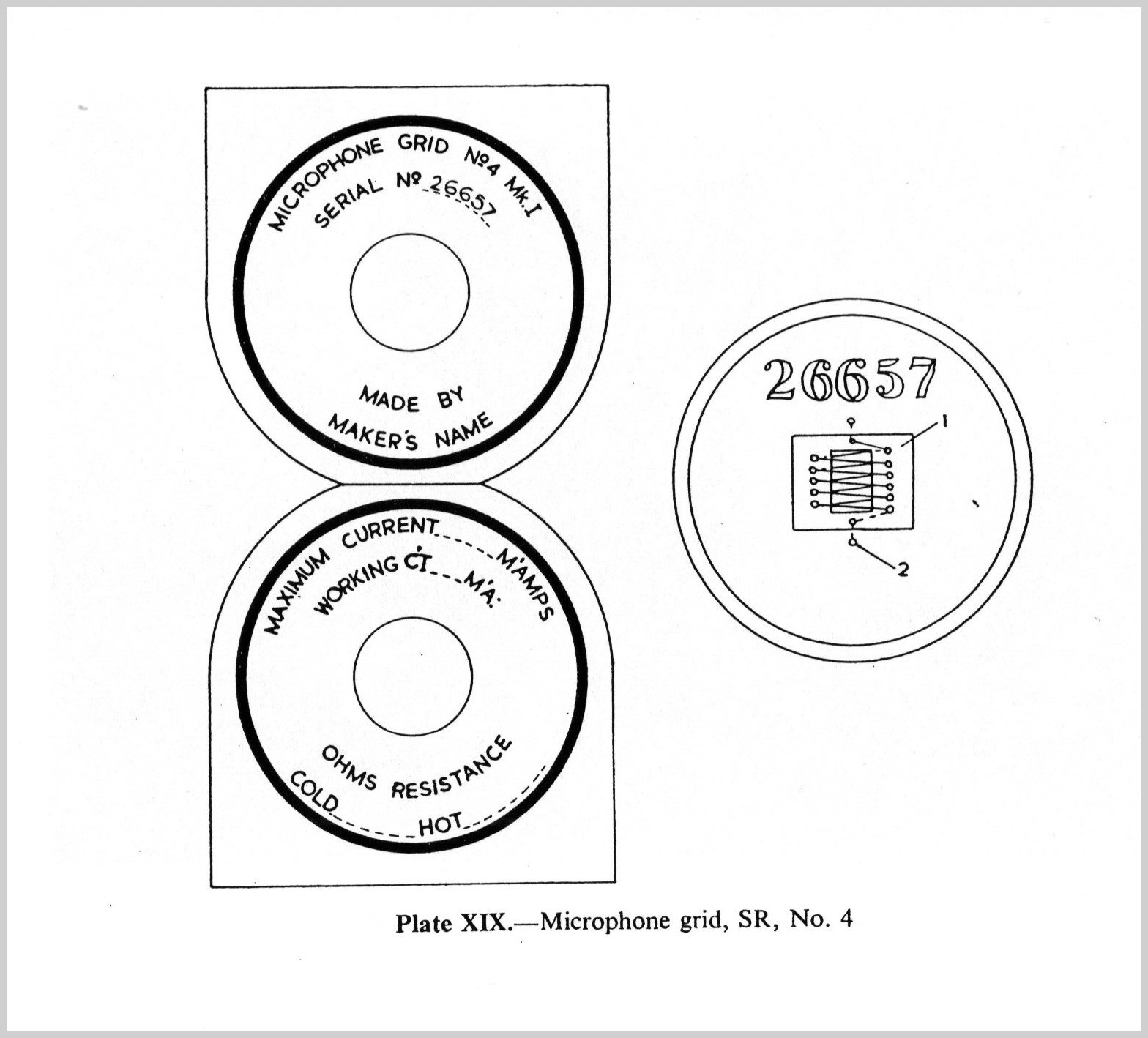
|
|||
| Section 11 | |||
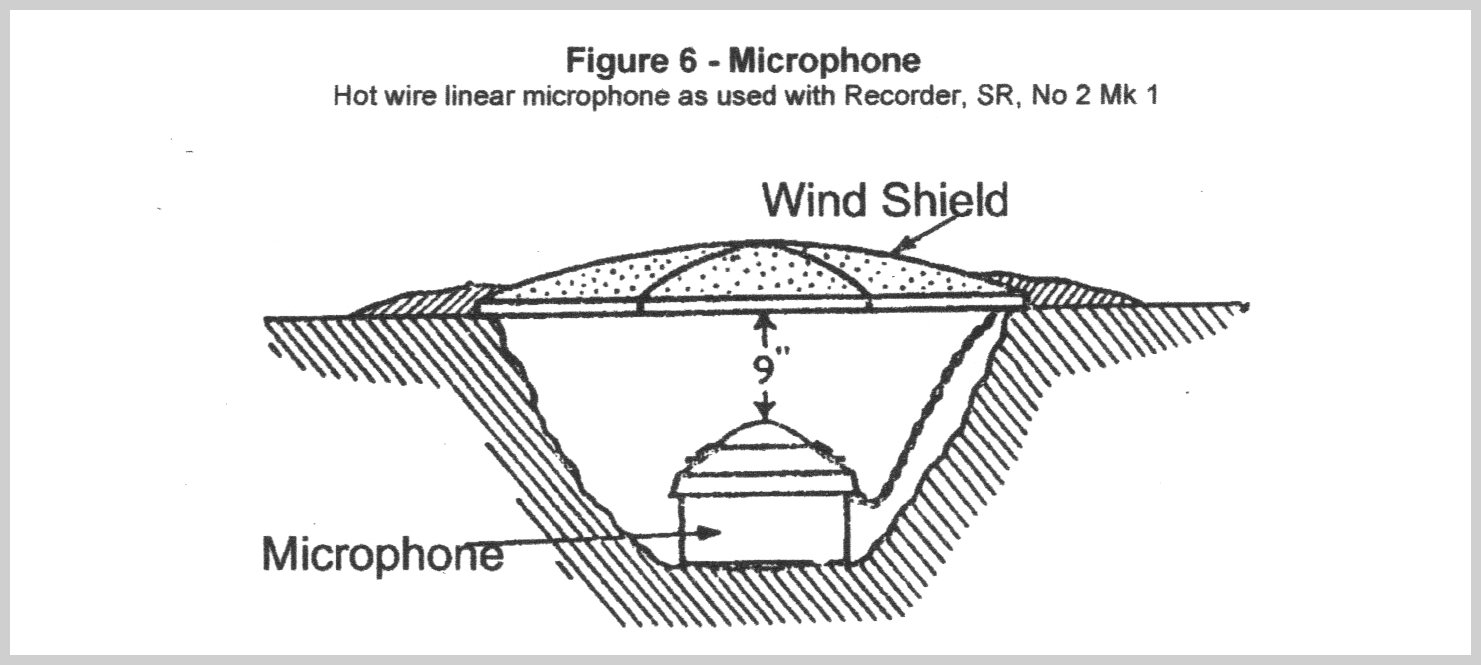
|
|||
| Section 12 | |||
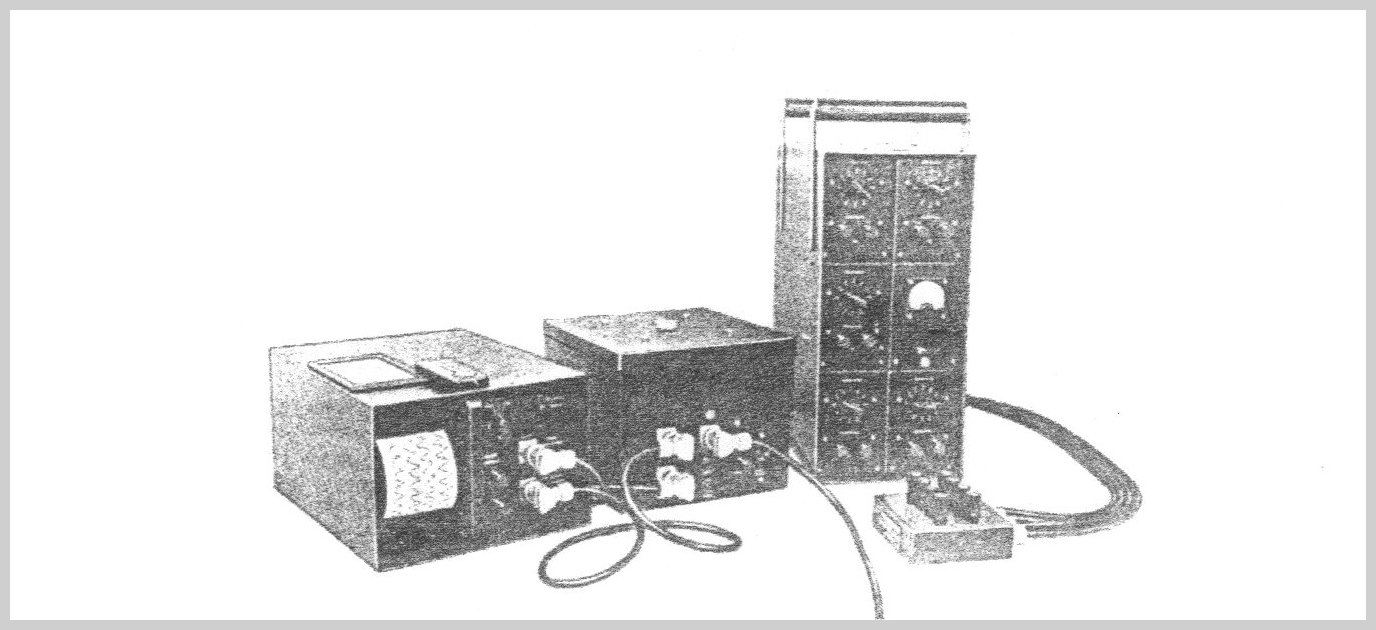
Recorder left; Power supply centre; Amplifier right with junction box |
|||
| Section 13 | |||
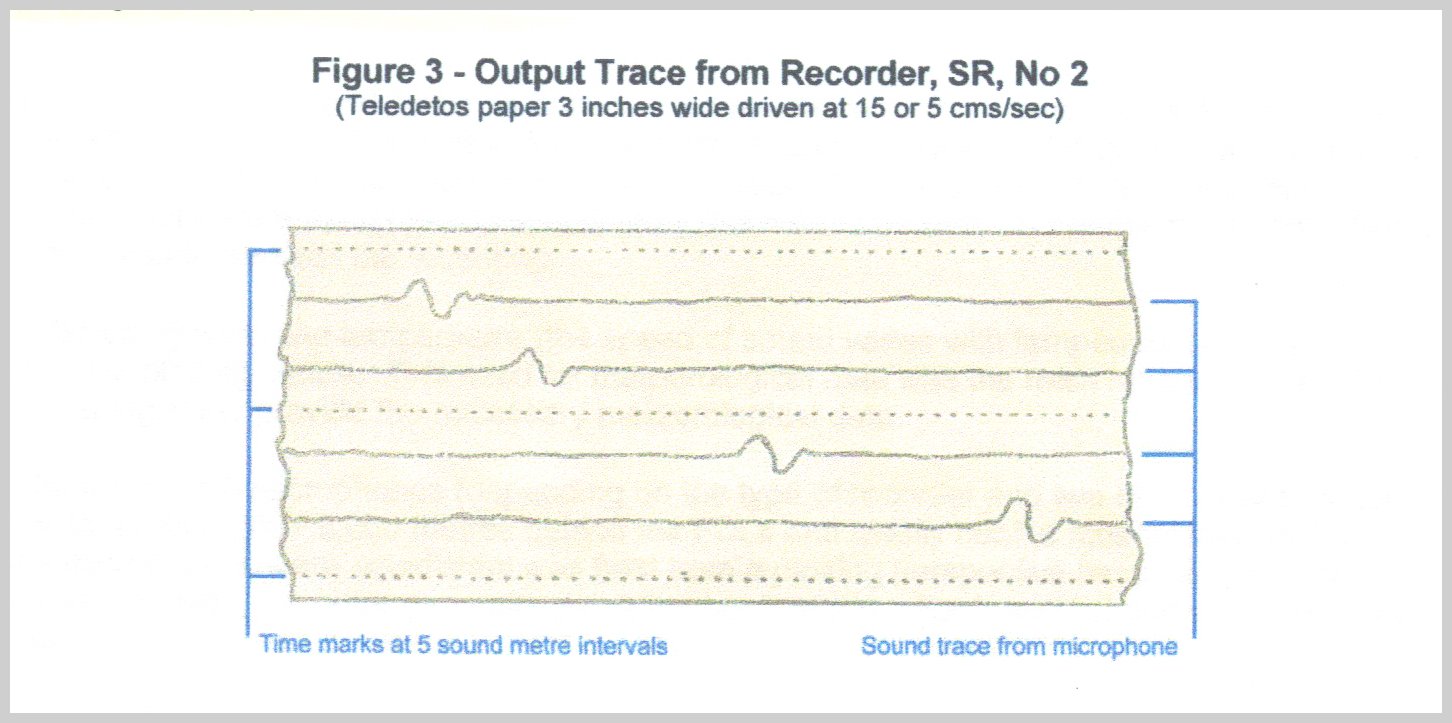 |
|||
| Section 14 | |||
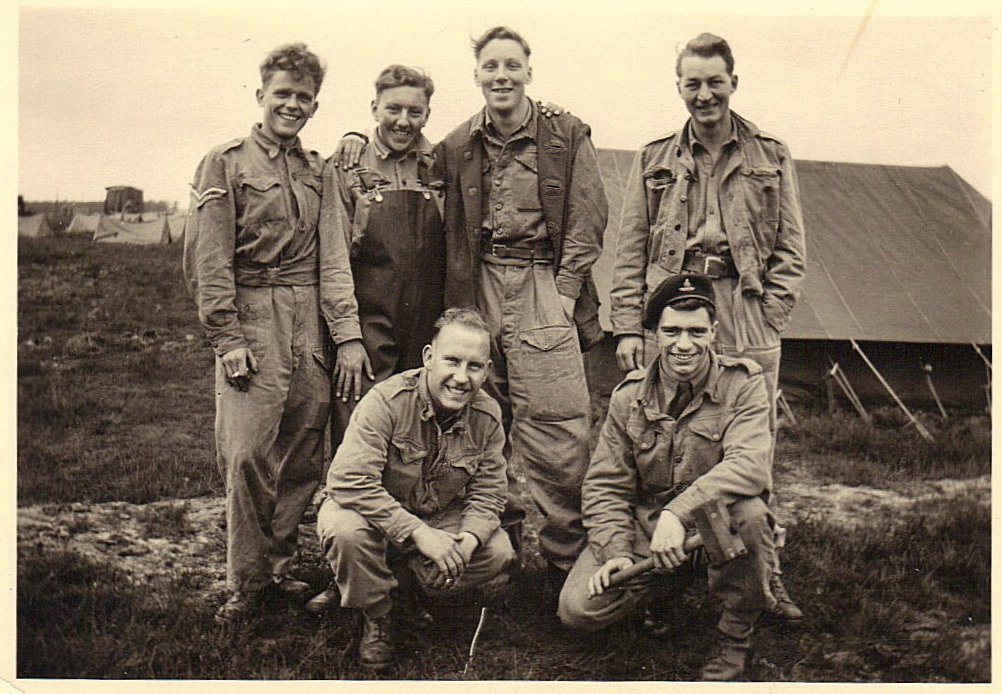
|
|||
| Section 15 | |||
|
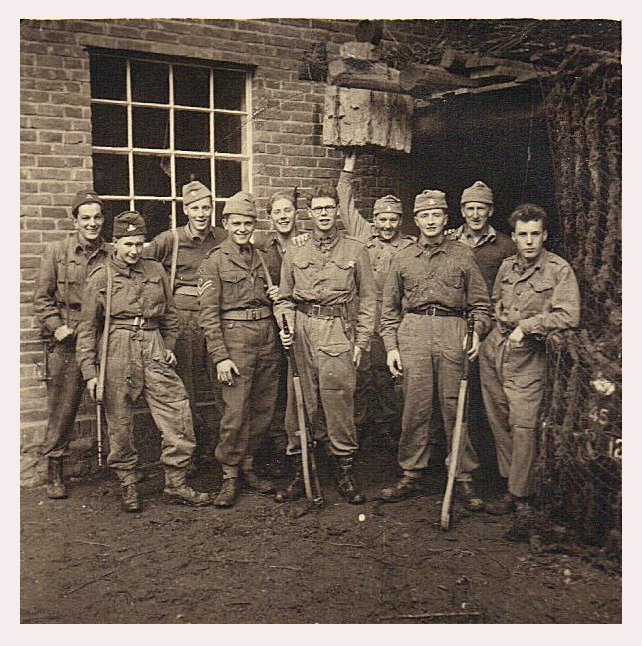
Divisional Excercise "Battle Royal" |
|||
| Section 16 | |||
|
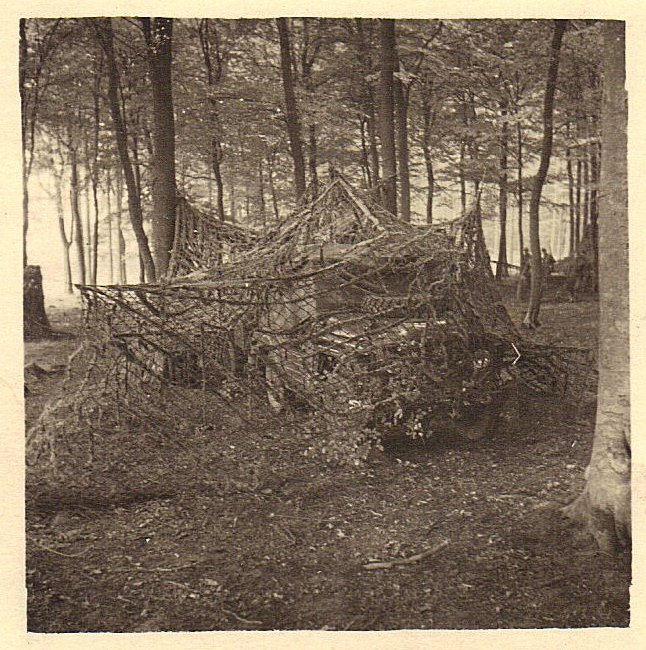
Camouflaged Champ, Divisional Excercise "Battle Royal" |
|||
| Section 17 | |||
|
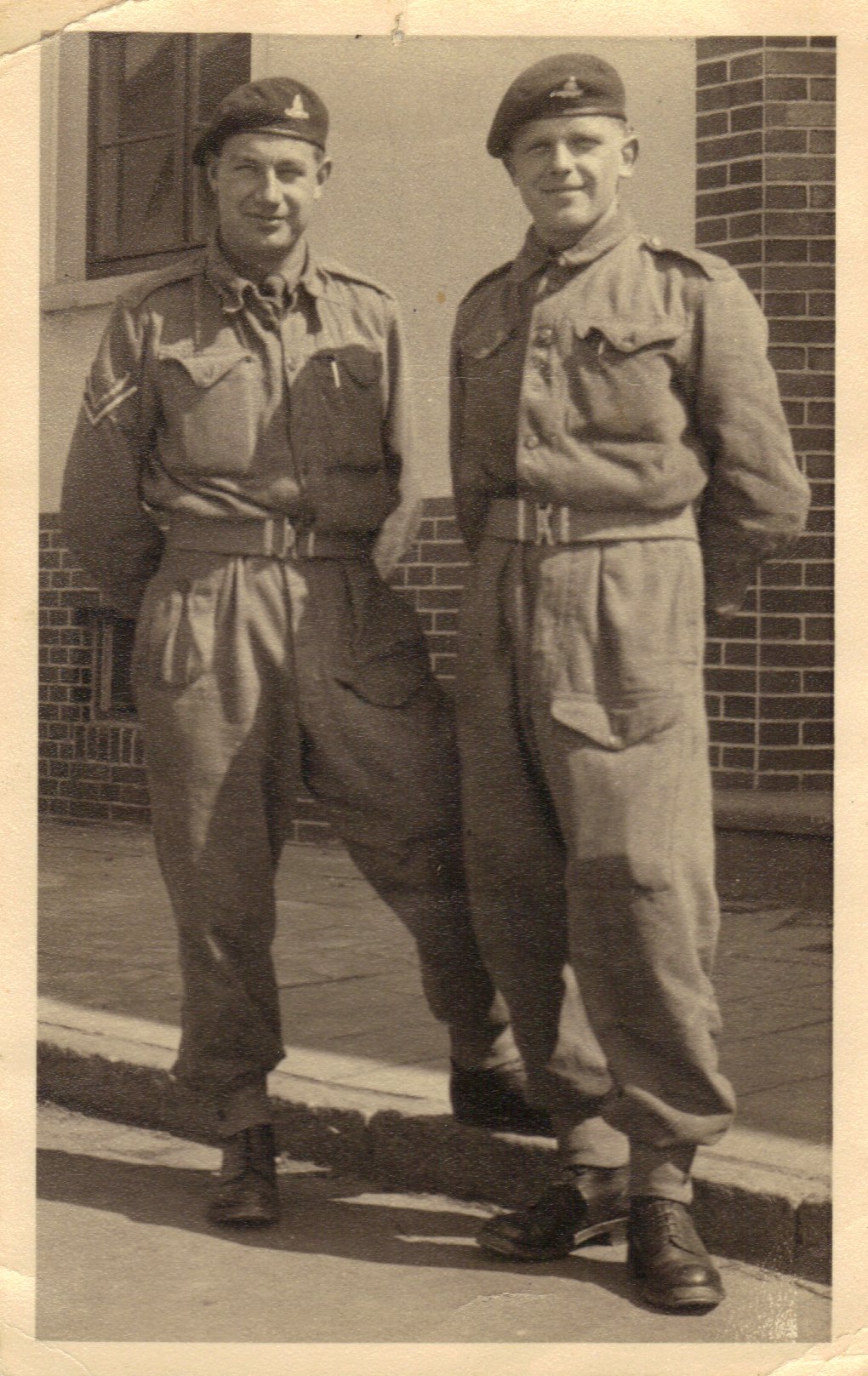
Two Intrepid Bombardiers! |
|||
| Section 18 | |||
|
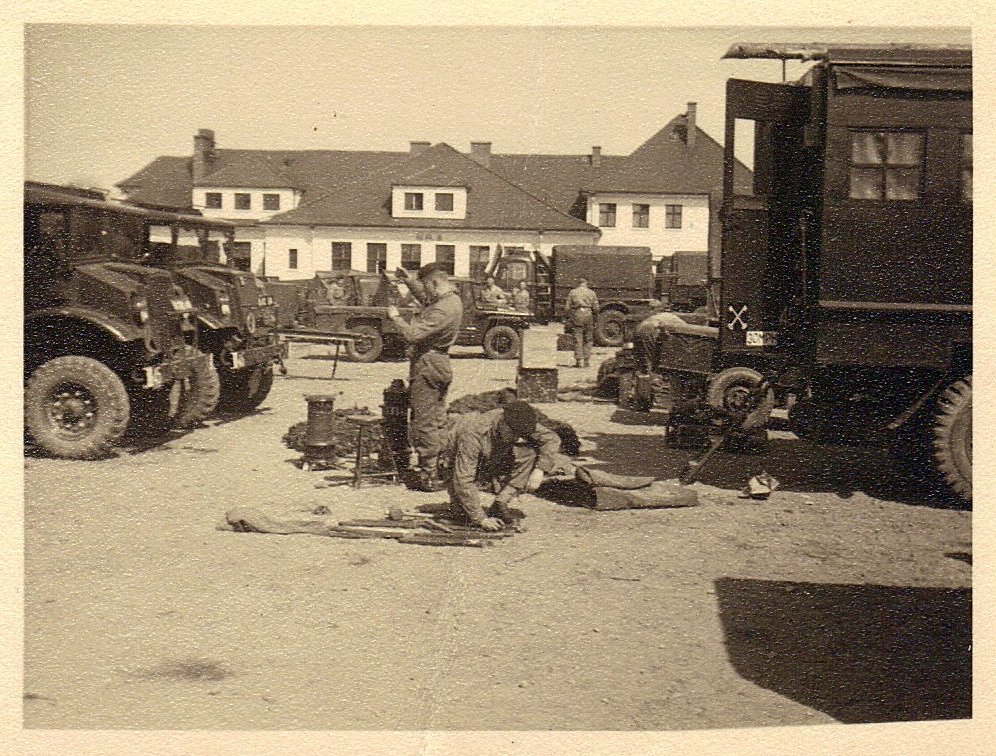
Maintenance. Author's Fordson Office Truck to right |
|||
| Section 19 | |||
|
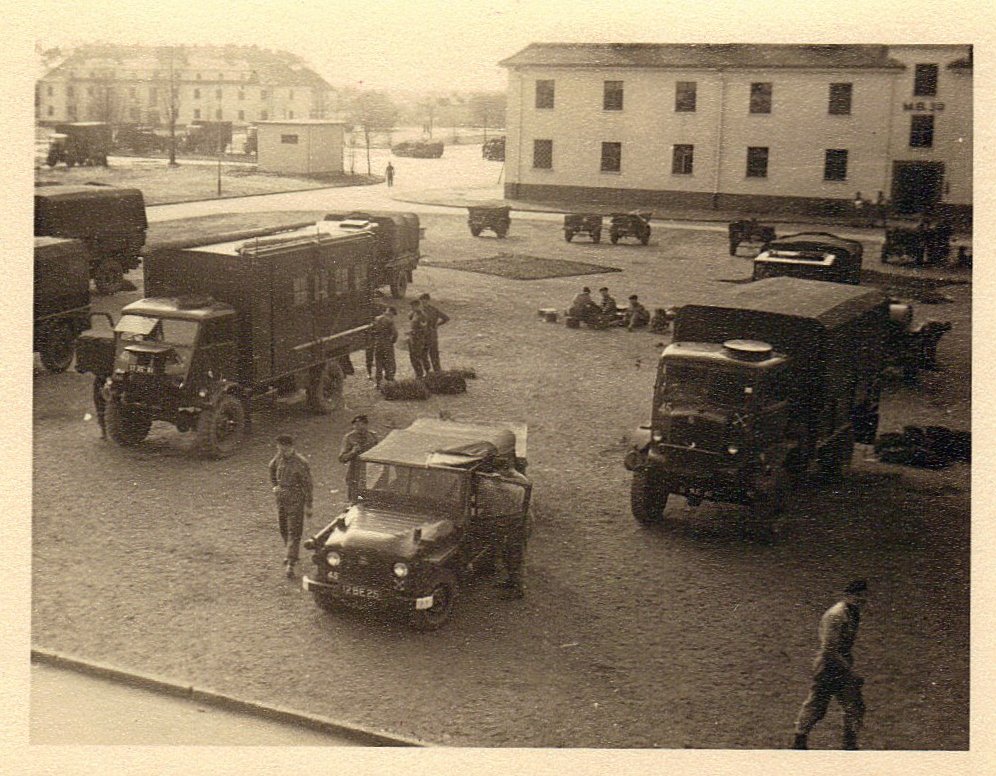
Office Truck, Champ & Matador - 4.2 inch Mortar Trailers at rear |
|||
| Section 20 | |||
|
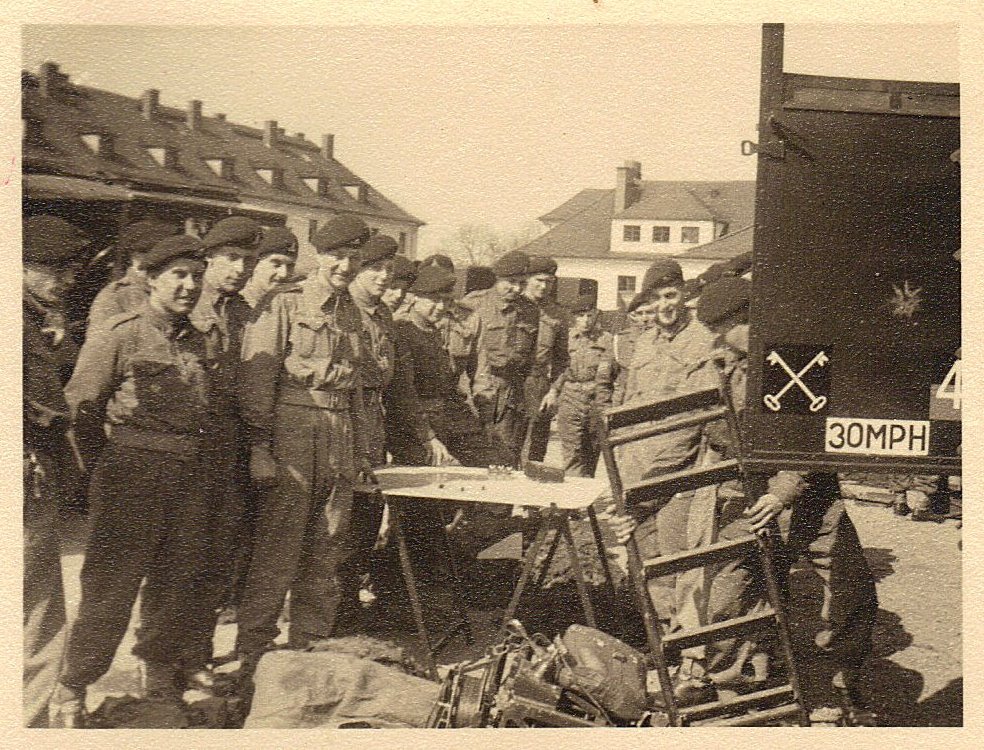
Author's demonstration of the Asymptote Plotting Table |
|||
| Section 21 | |||
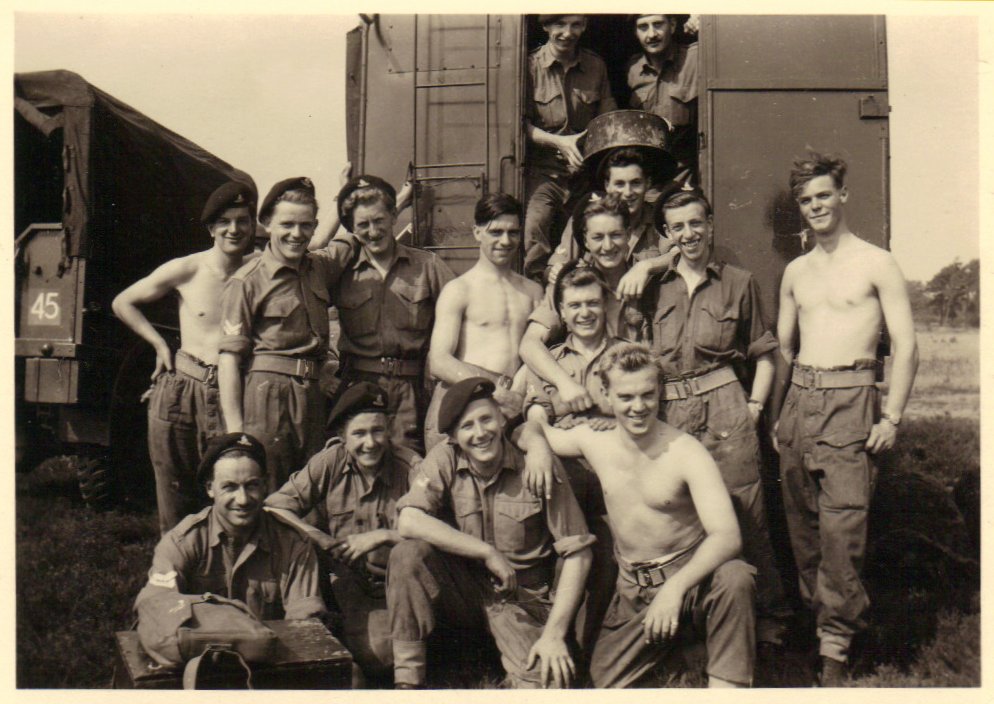 Gunners always like to have their photo taken! |
|||
| Section 22 | |||
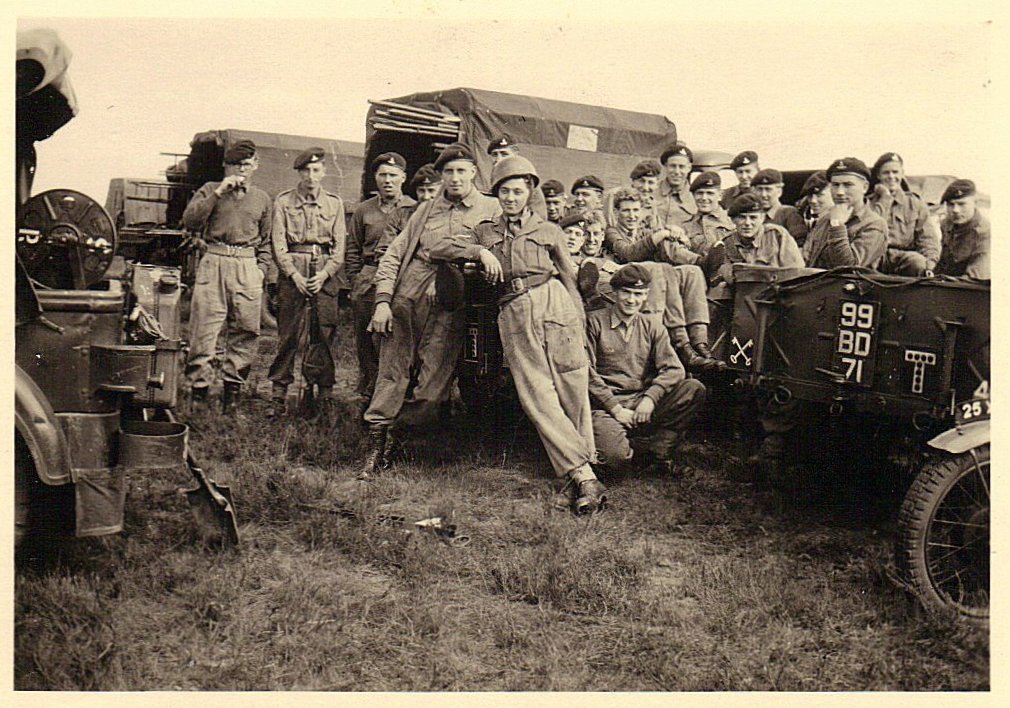 "A" Troop 115 Locating Battery. Note: The rear of Champ left with cable laying drum, spade etc.& despatch rider (very WWII)
|
|||
| Section 23 | |||
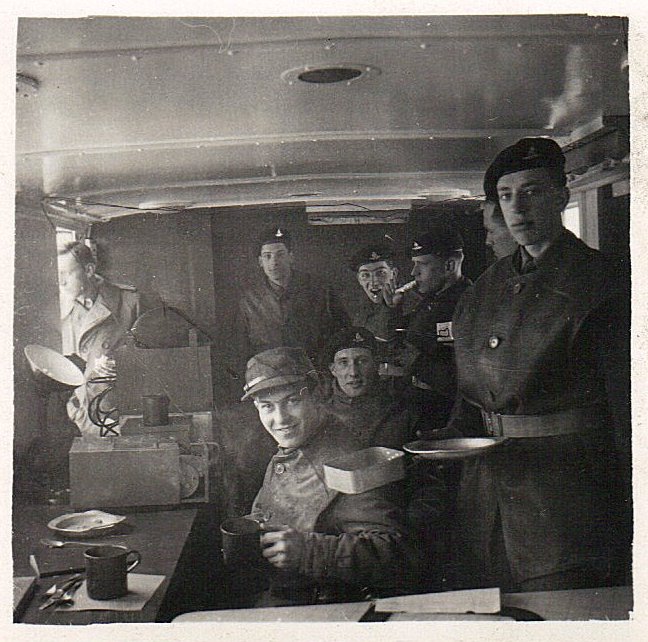
Note the partly open S.R. Recorder etc. on left work top & Officer in doorway. Viewed looking from rear of office truck |
|||
| Section 24 | |||
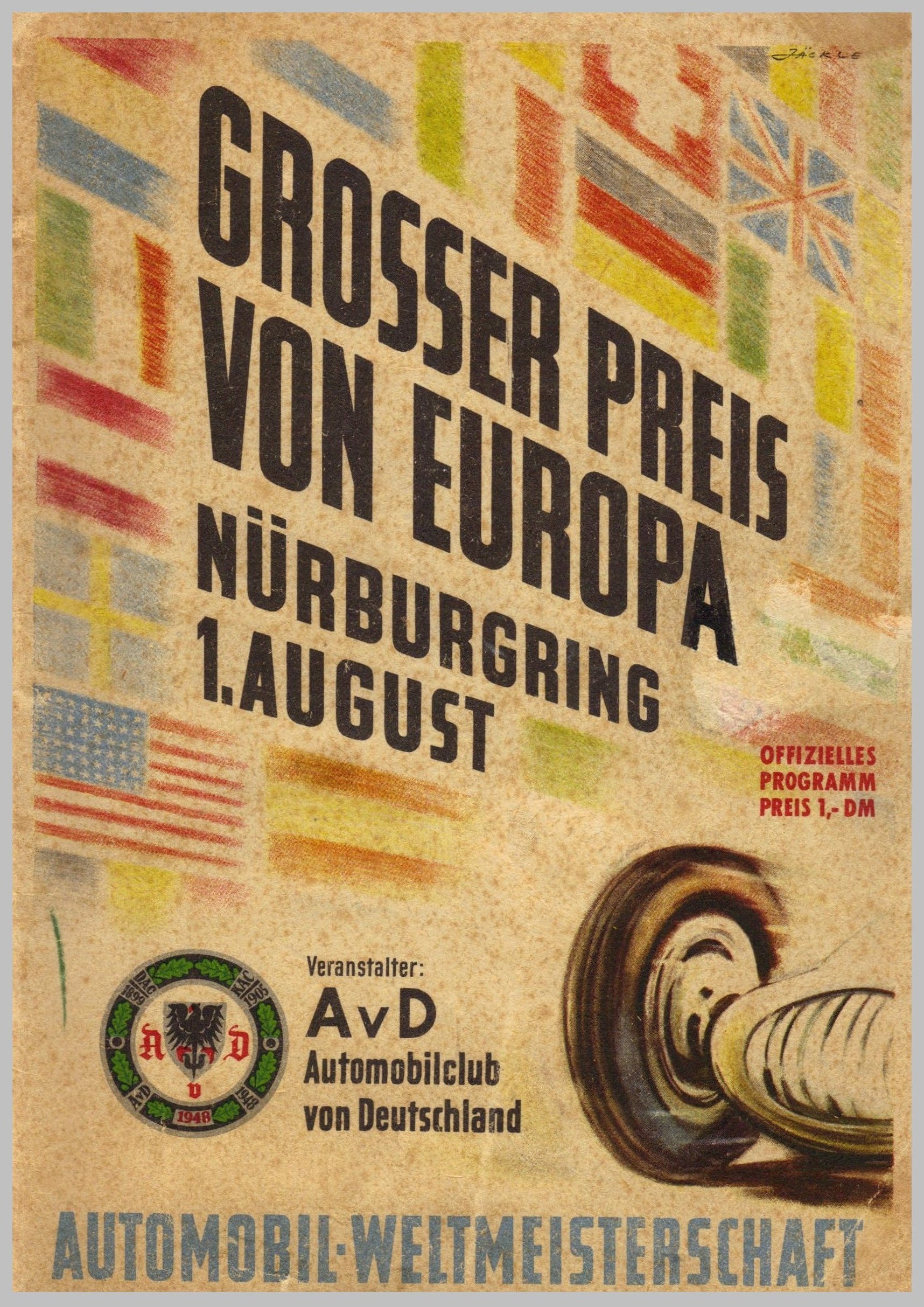
The German Grand Prix, Nürburgring, 1st August 1954 |
|||
| Section 25 | |||
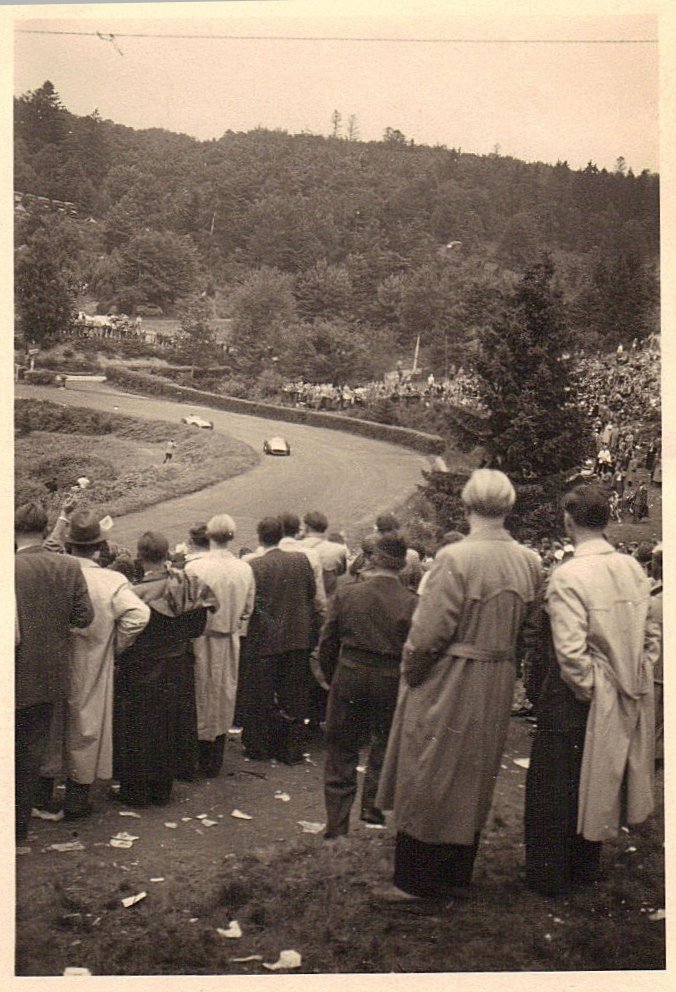
The W196 Mercedes G.P. cars about 400 yards before "The Karussel" |
|||
| Section 26 | |||
|
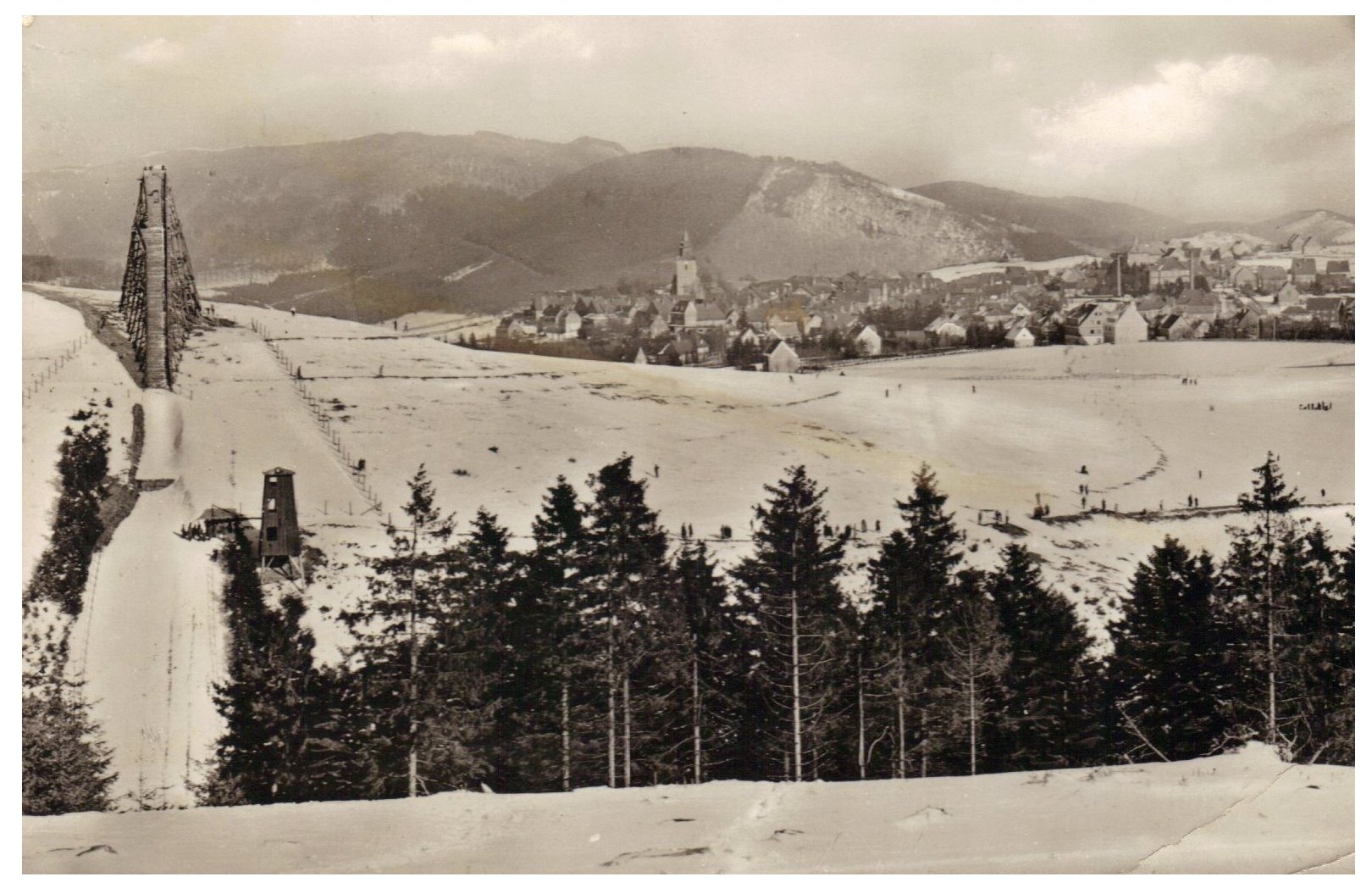
The No. 6 Leave Centre |
|||
| Section 27 | |||
|
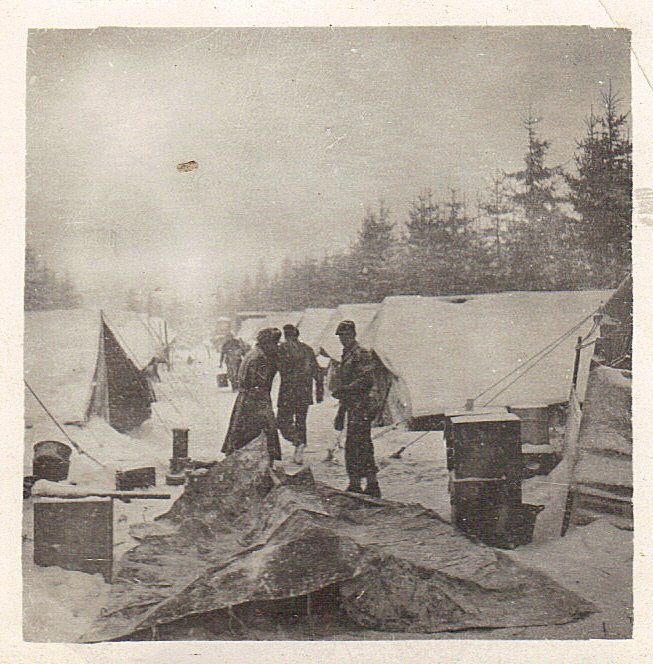
Home comforts in a blizzard under canvas |
|||
| Section 28 | |||
|
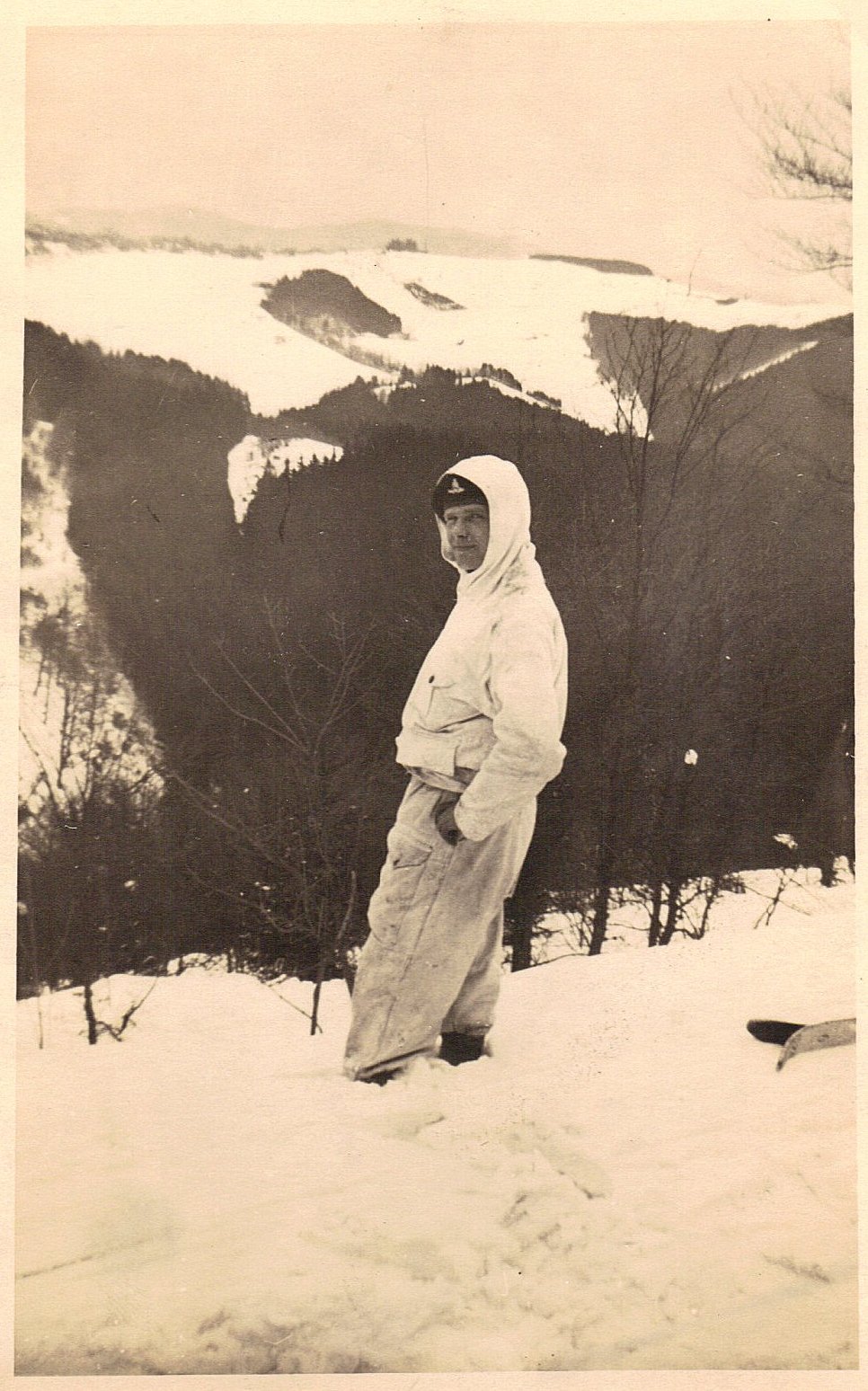
The author trying to look the part |
|||
| Section 29 | |||
|
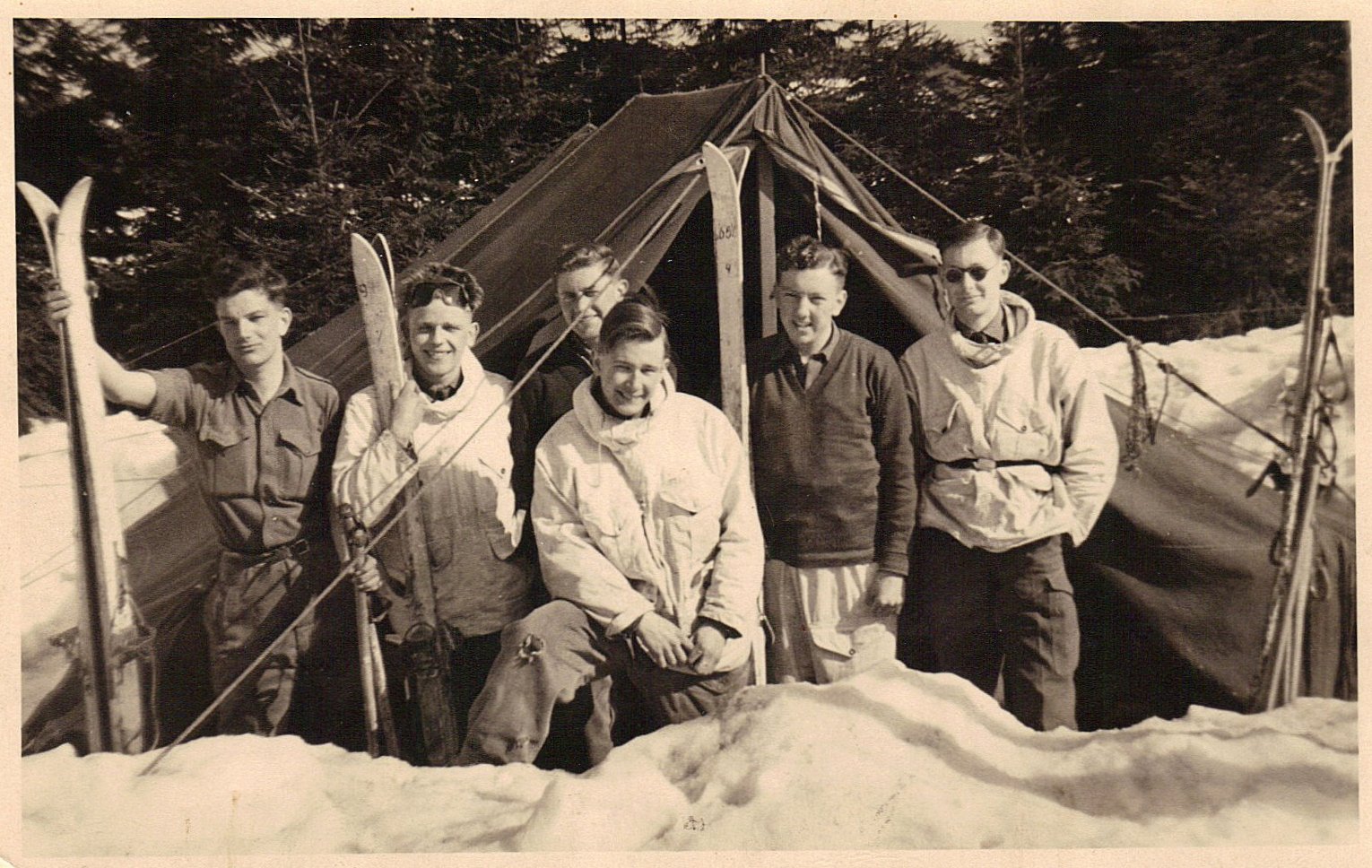
The skis were made for the 1940 Norwegian Campaign ! |
|||
| Section 30 | |||
|
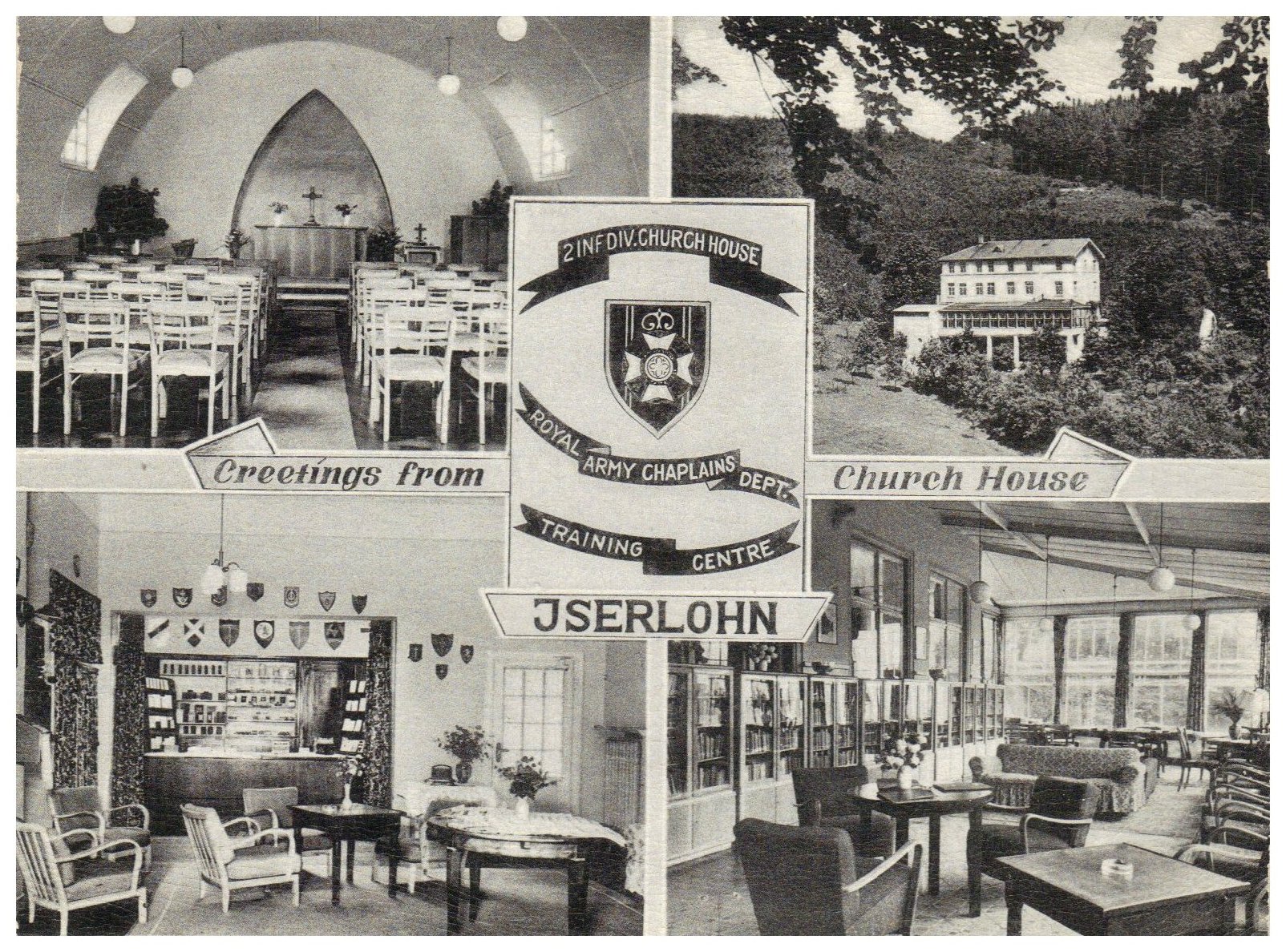
Church House Training Centre - A good weekend skive. |
|||
| Section 31 | |||
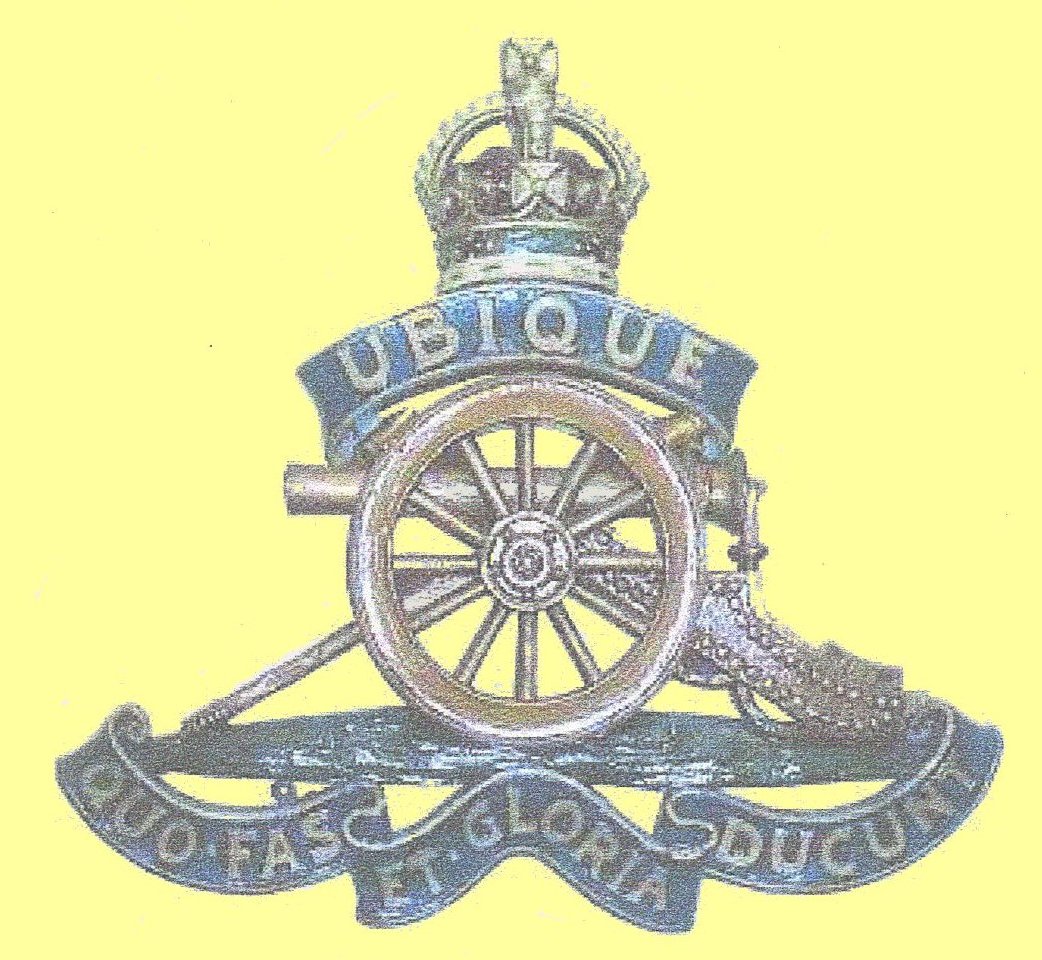
|
|||
| Section 32 | |||
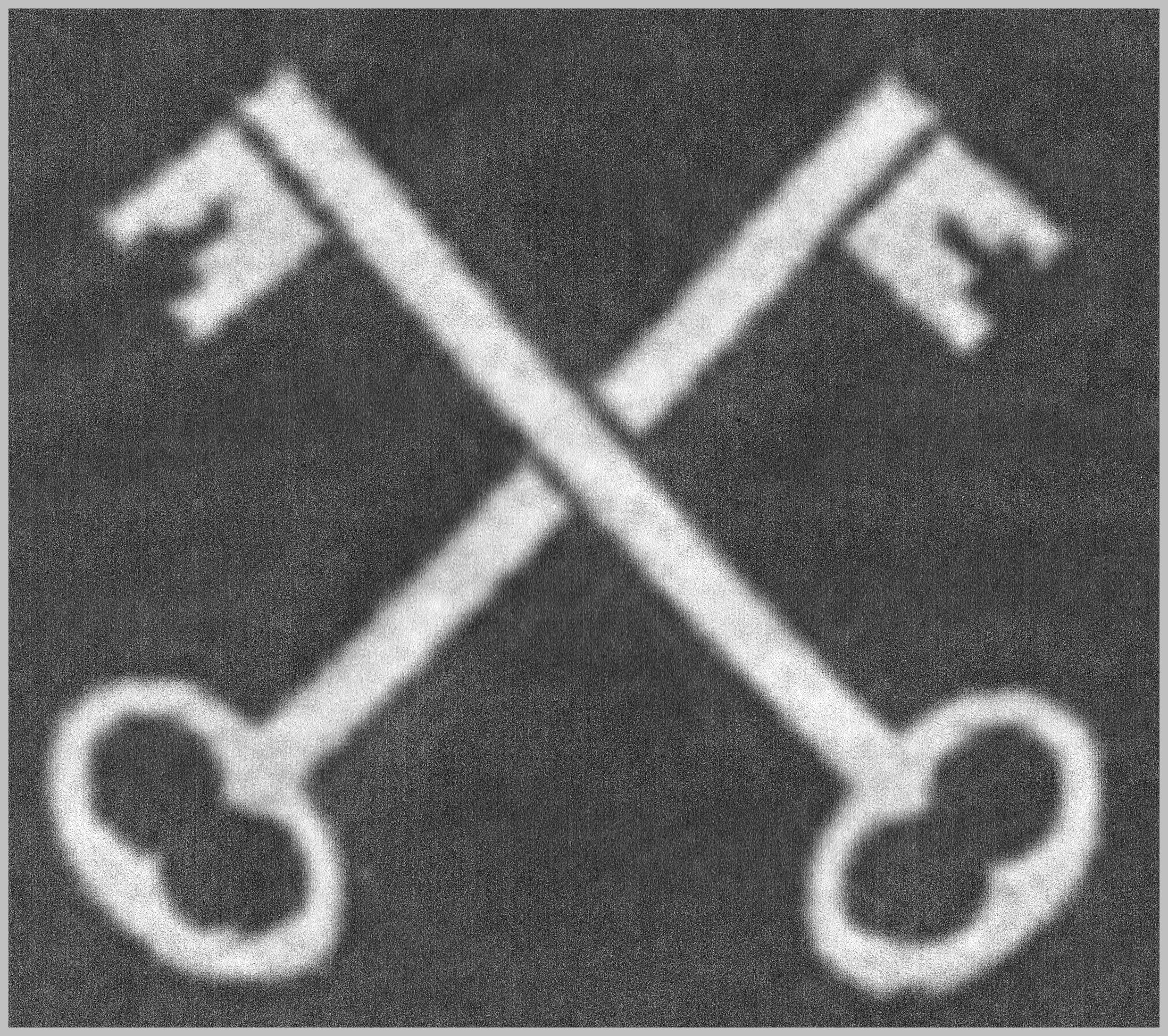
|
|||
| Section 33 | |||
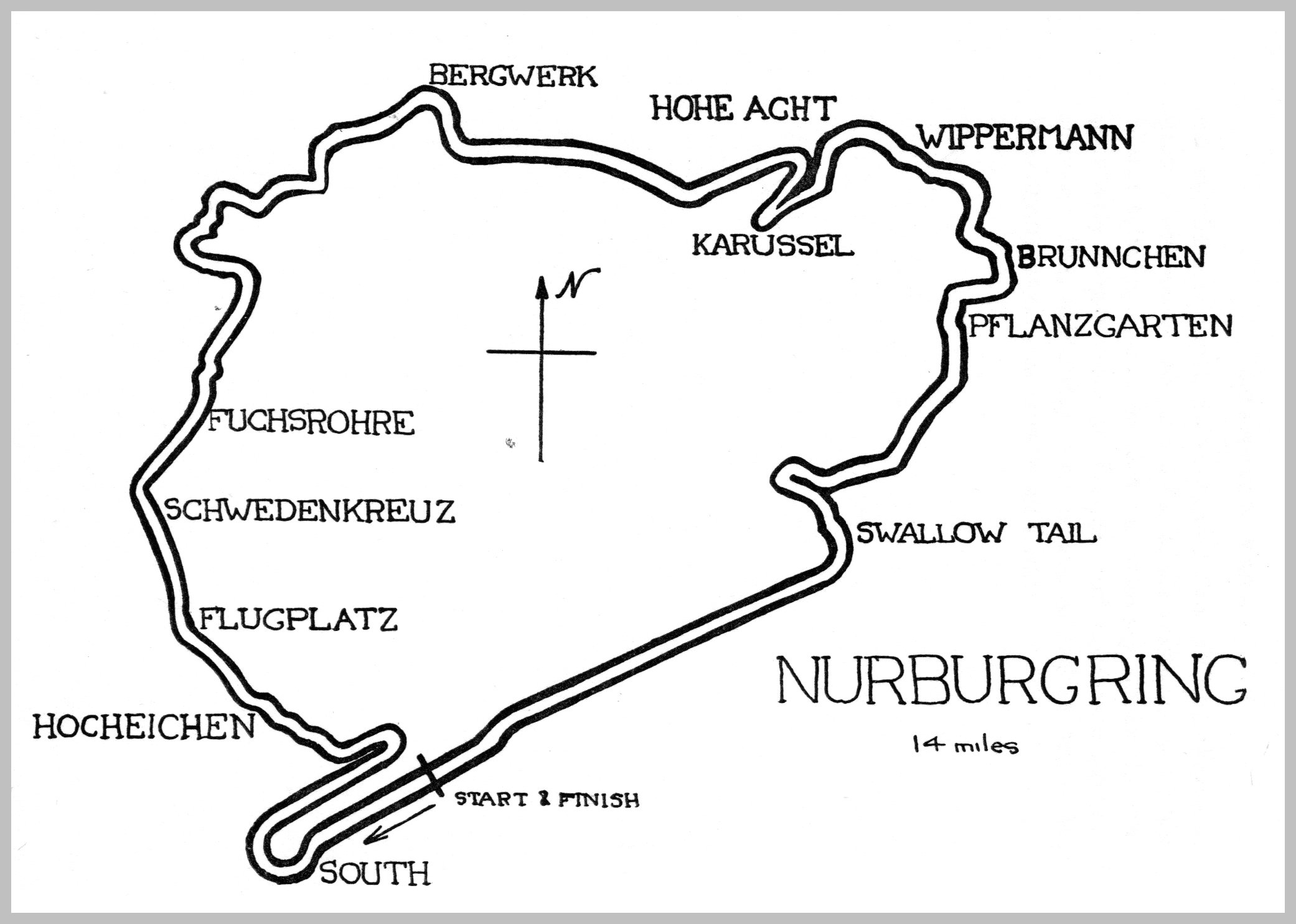
|
|||
| Section 34: Notes and Sources | |||
|
|
|||
| NOTE: My thanks are due to Julian Rawes for his input and constructing this web site, and Alan Merryweather for support and proof reading. Bryant G Bayliffe. 1 September 2010 | |||
|
|
|||